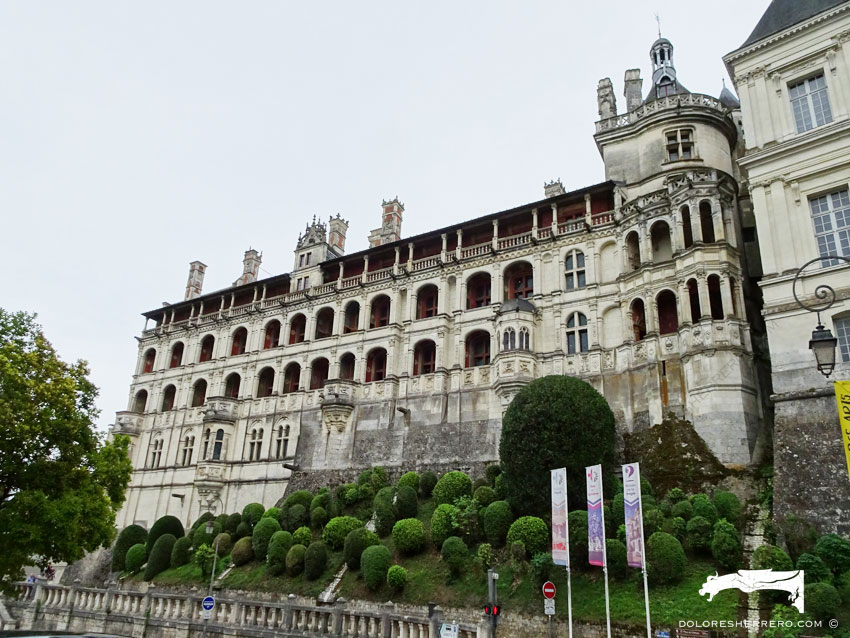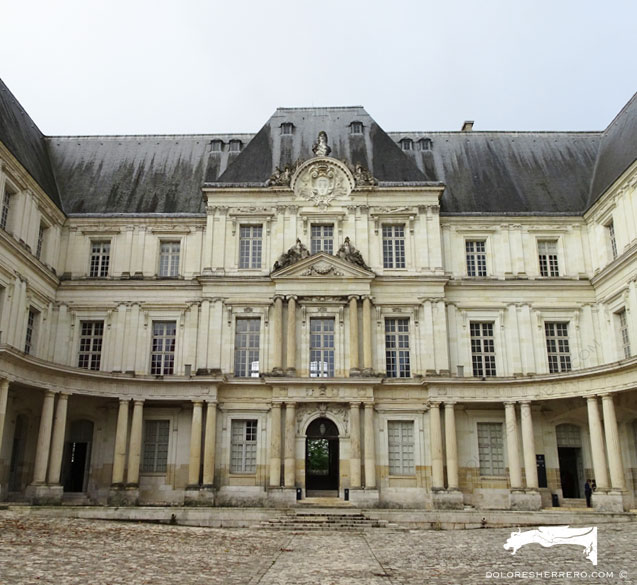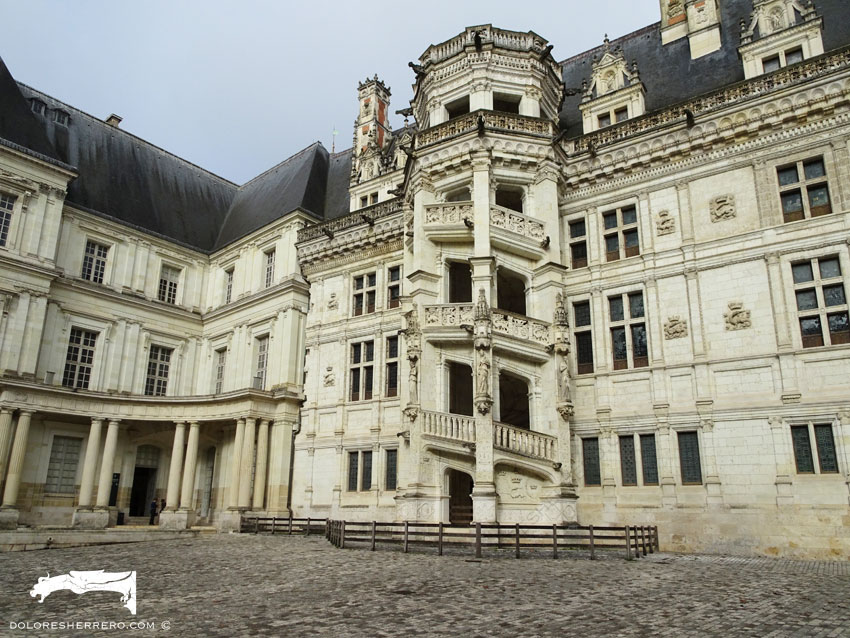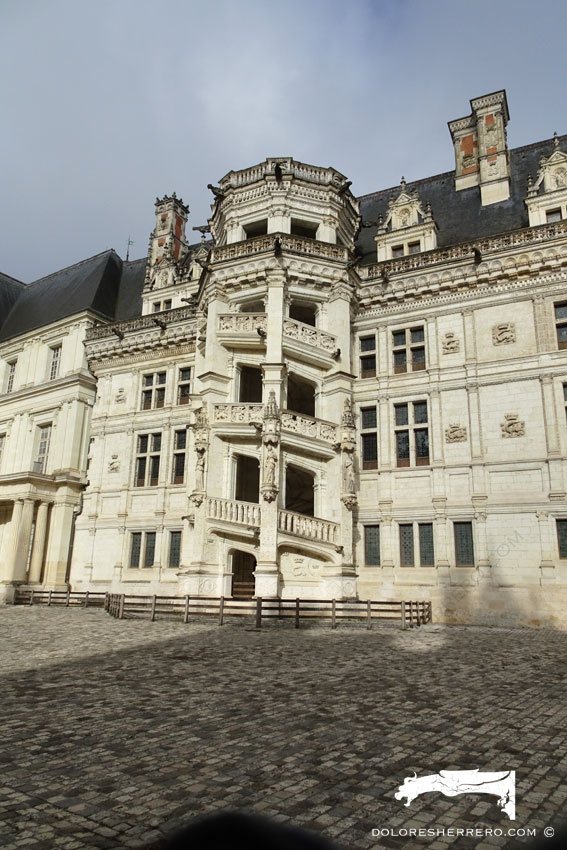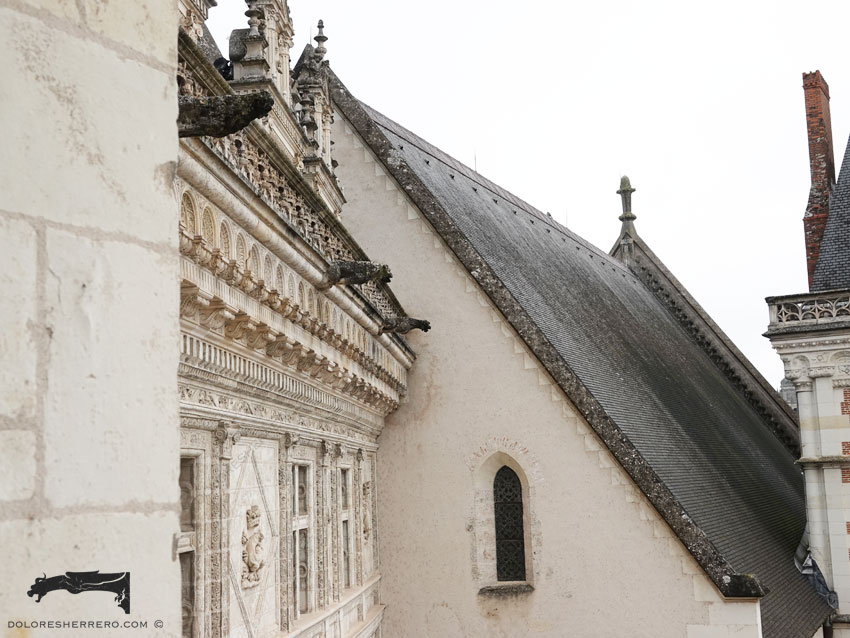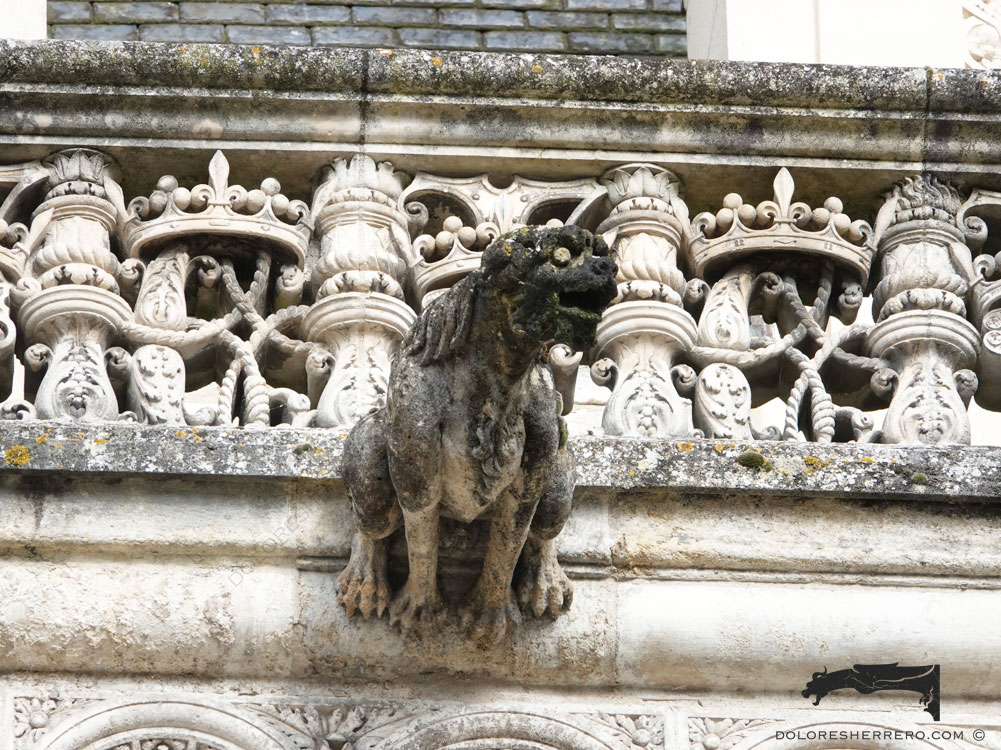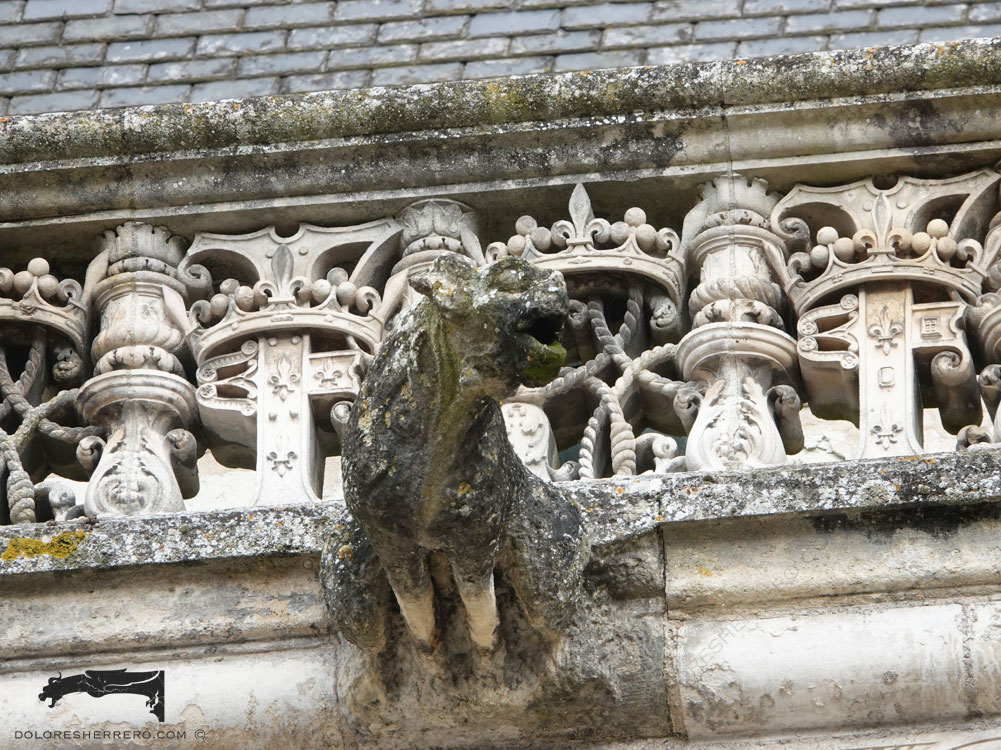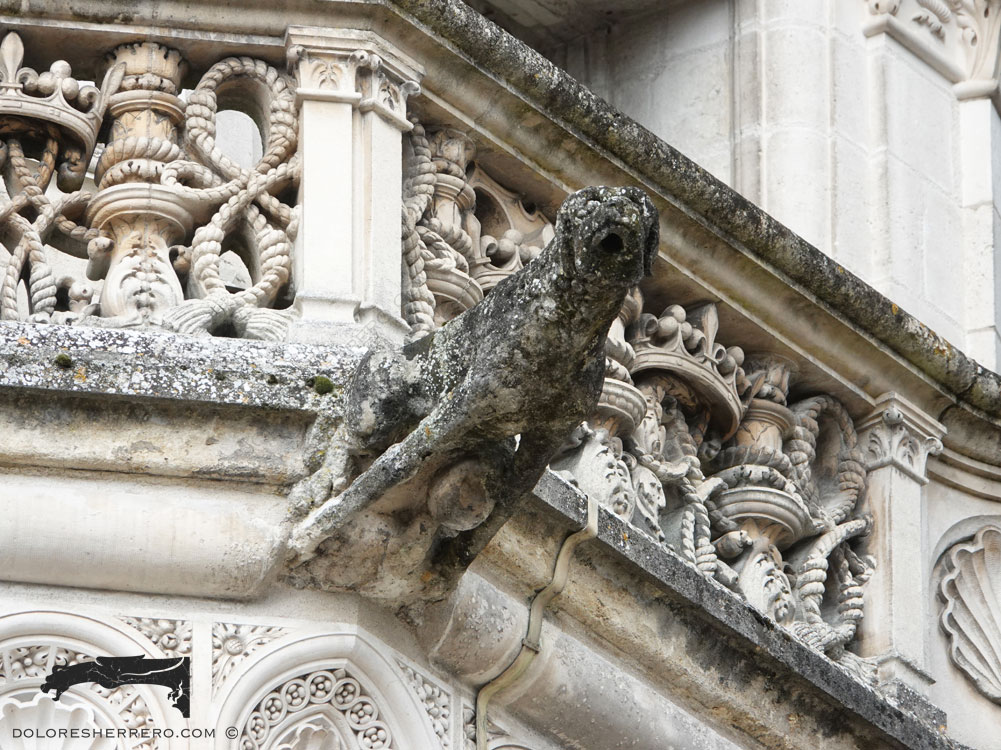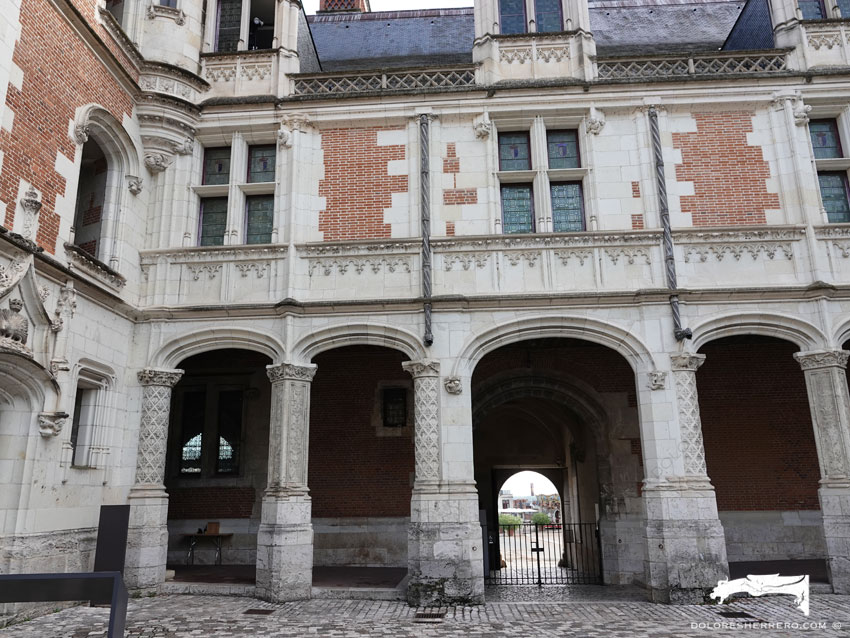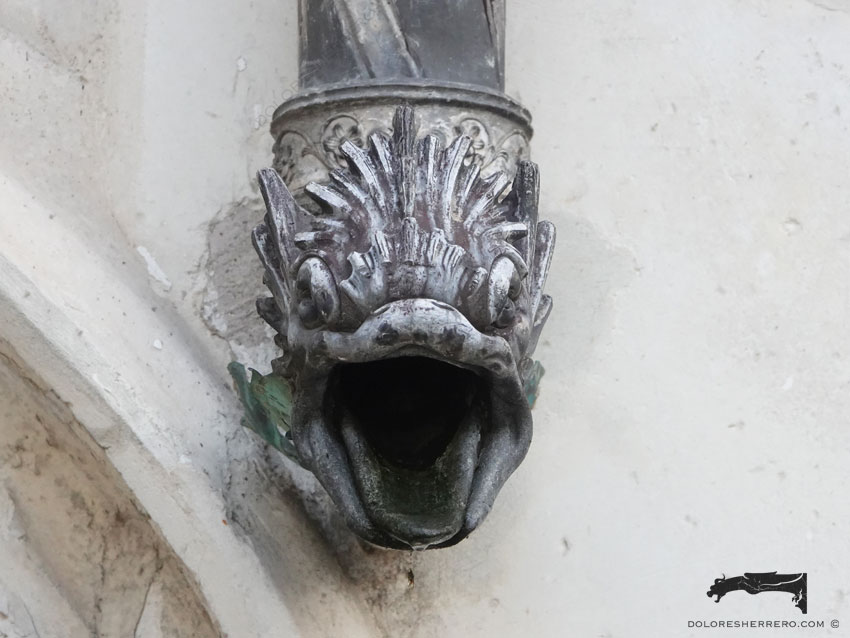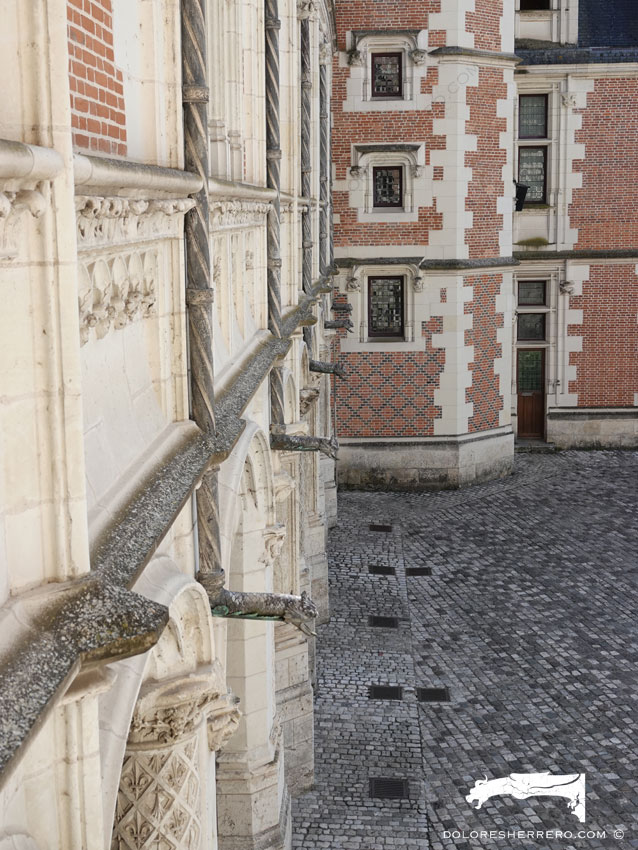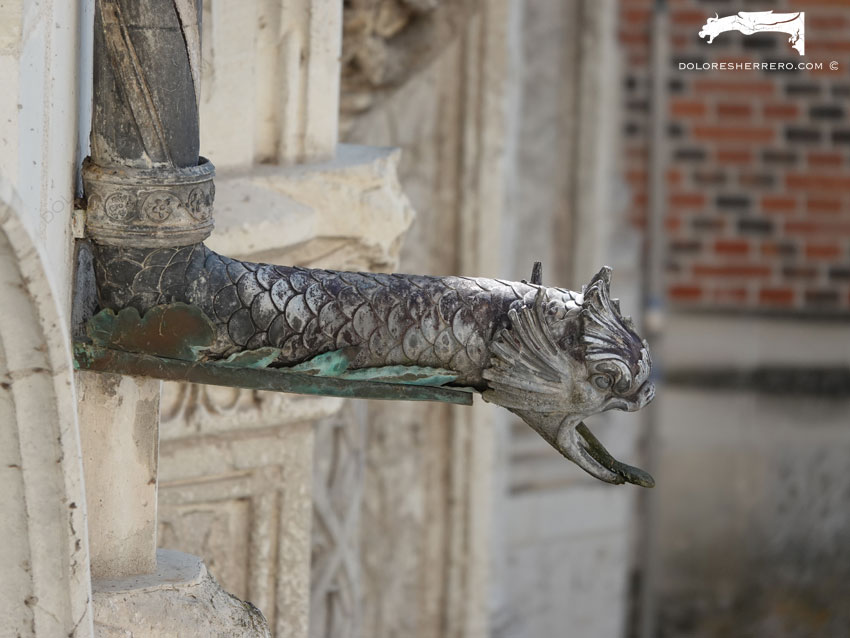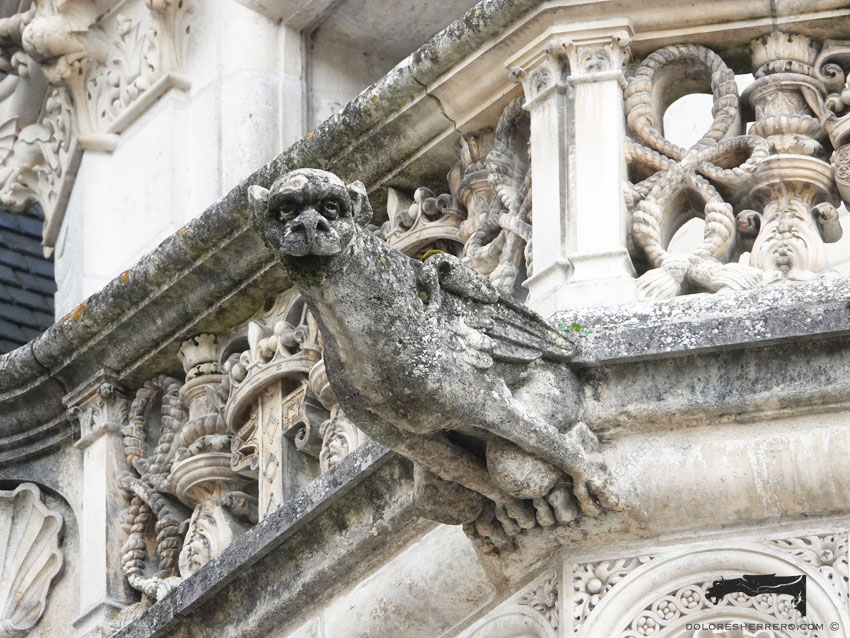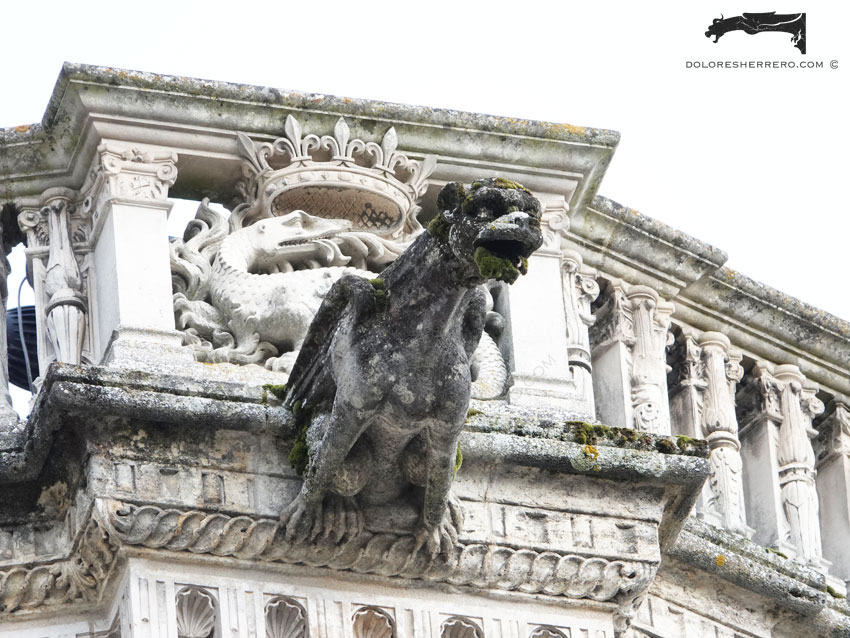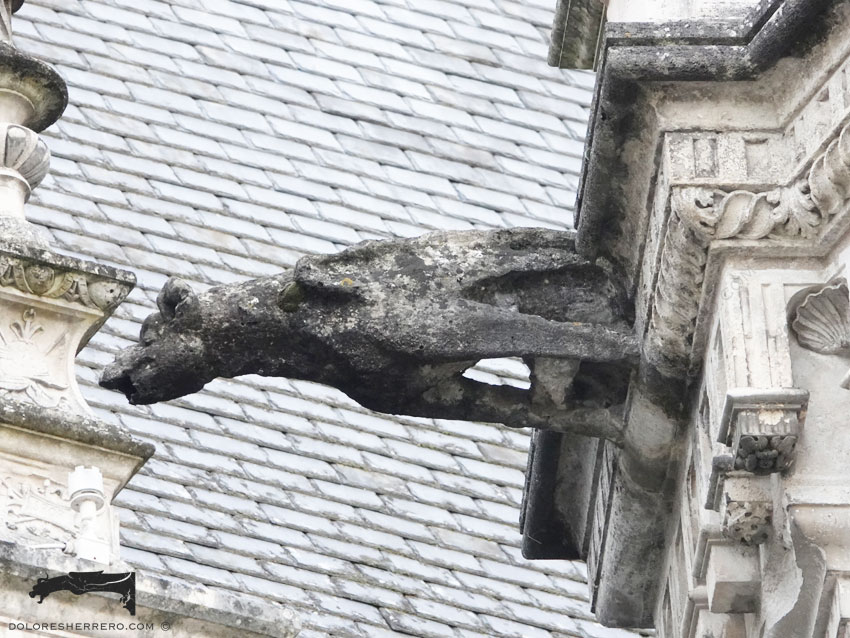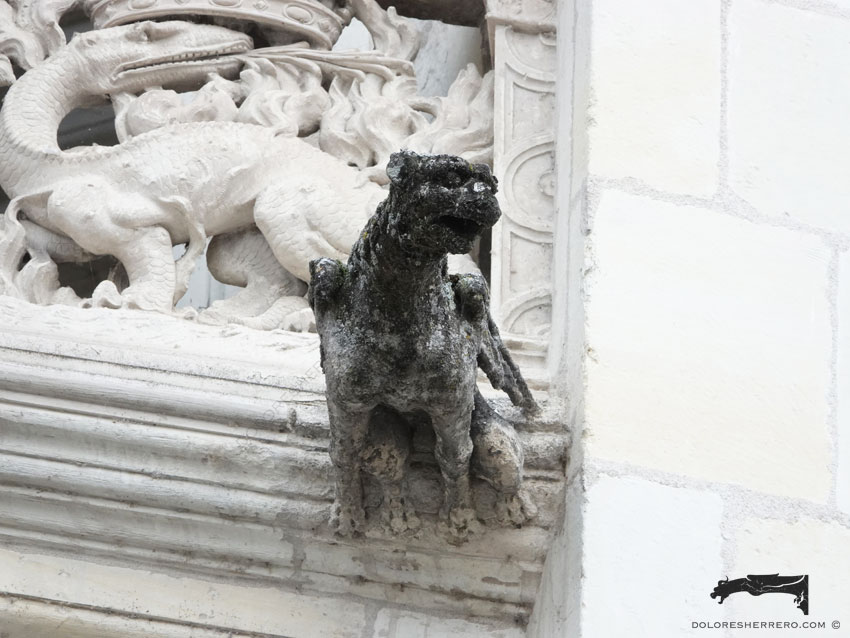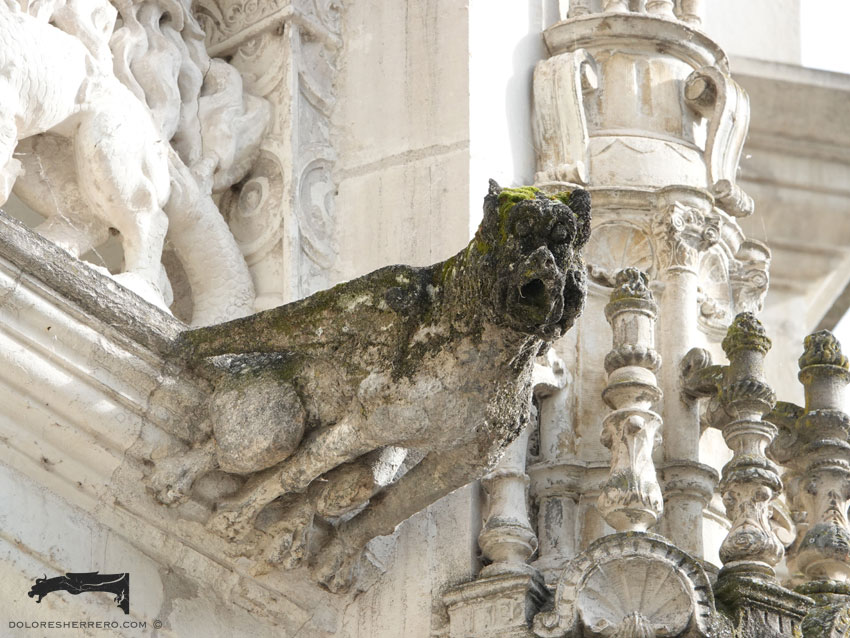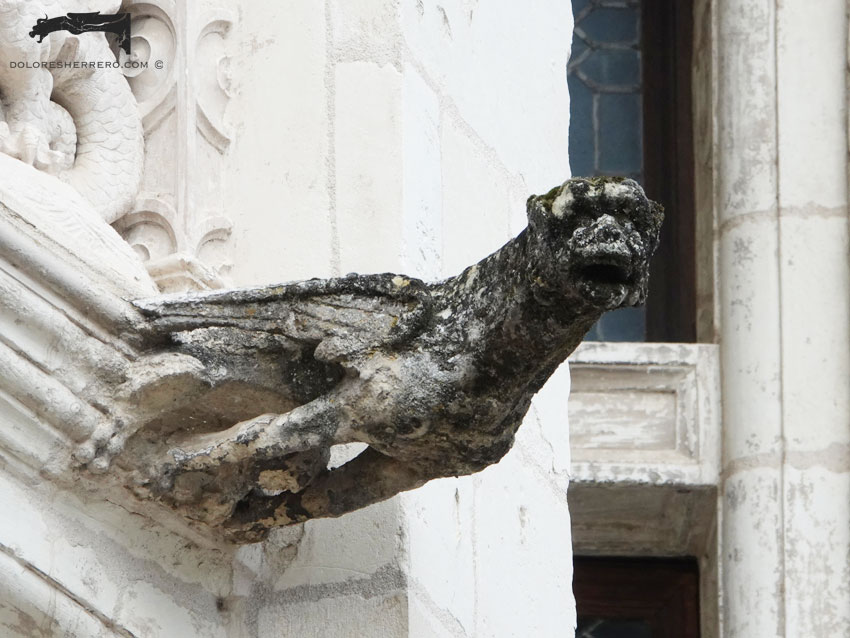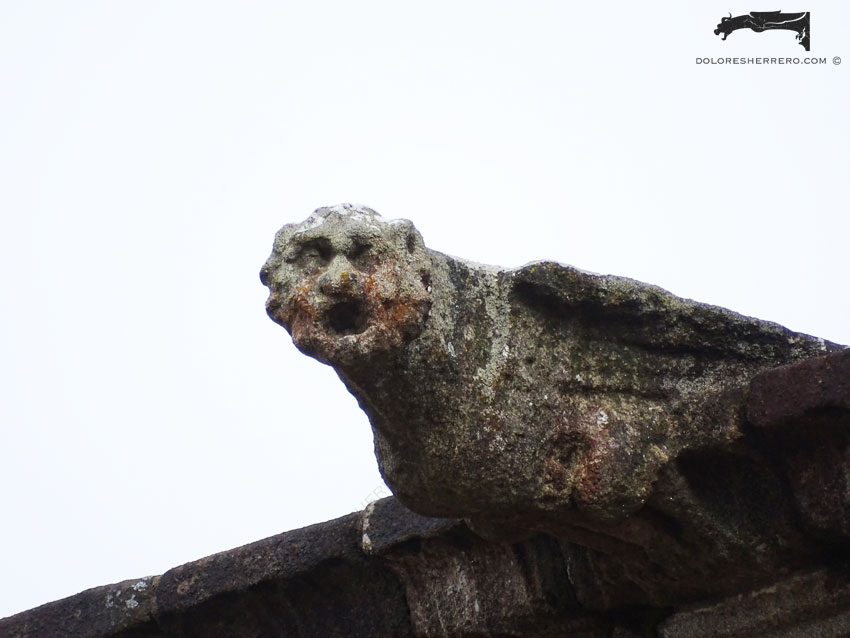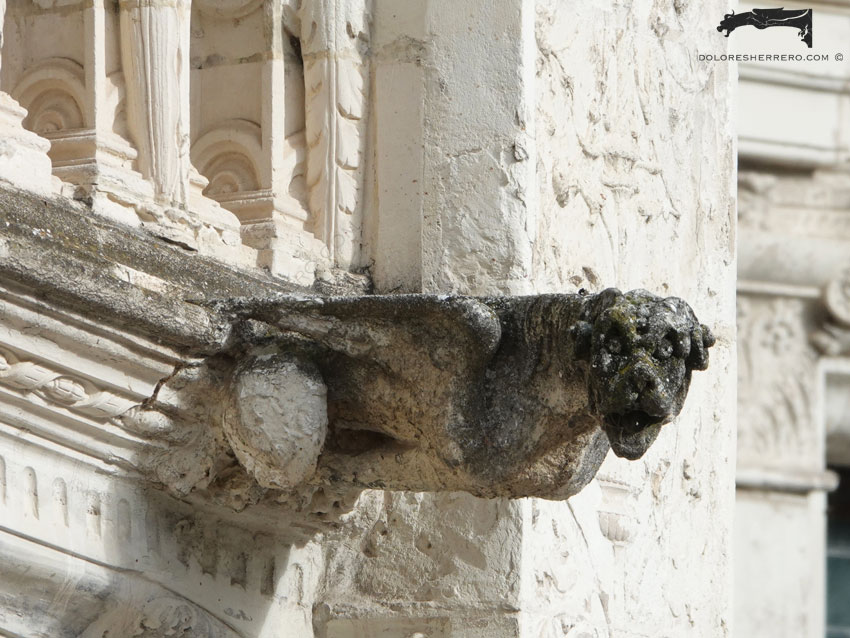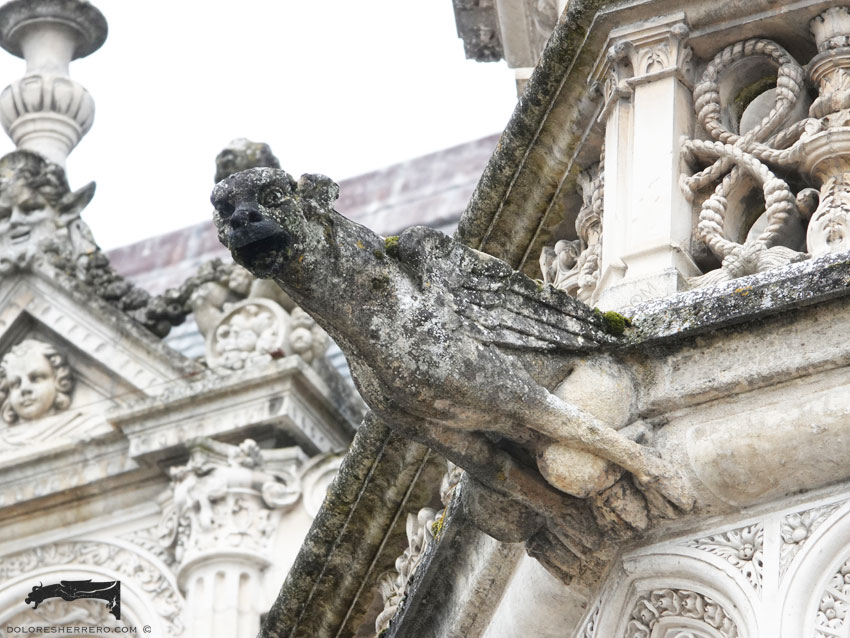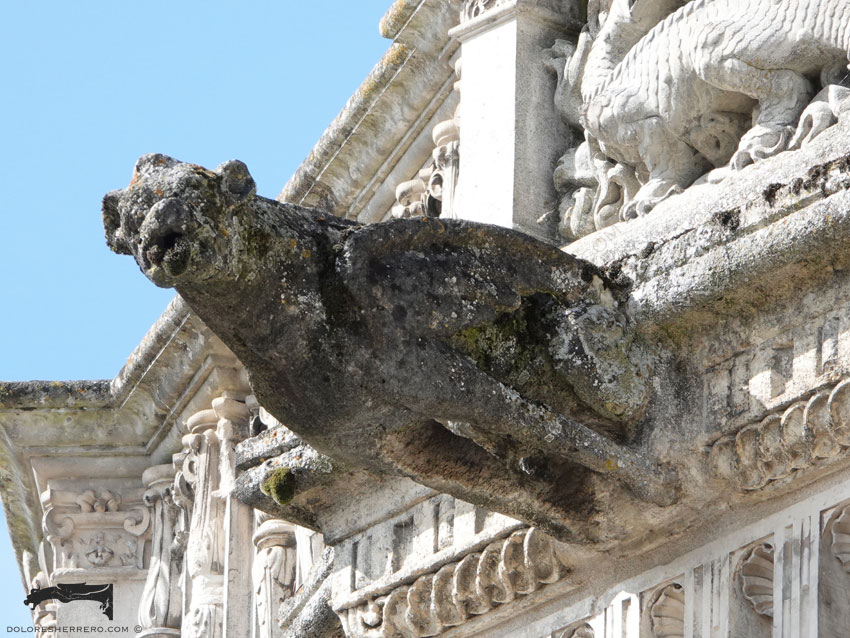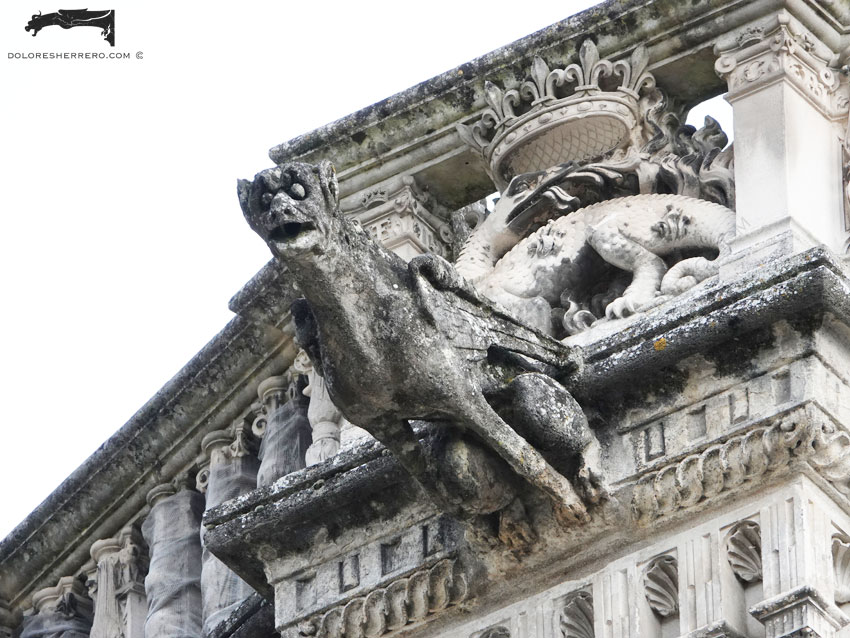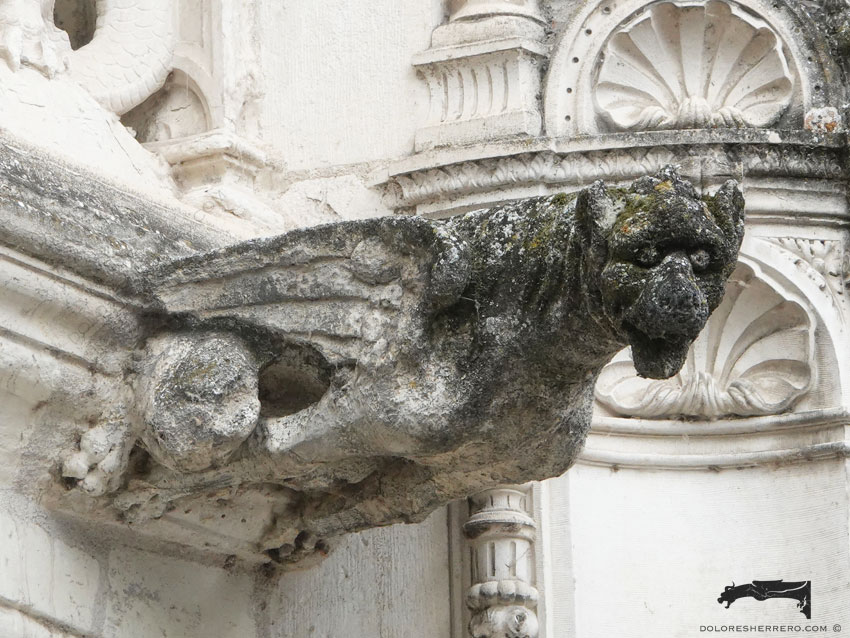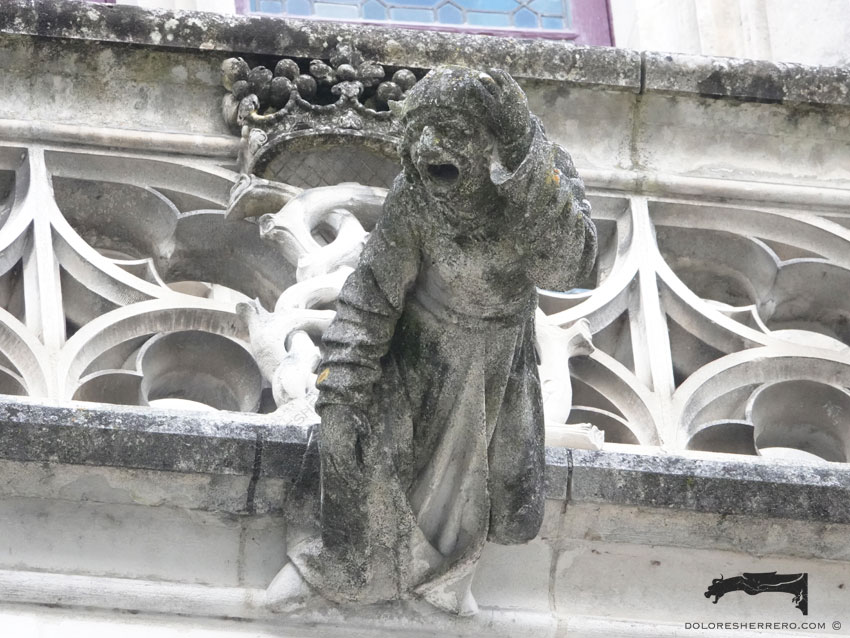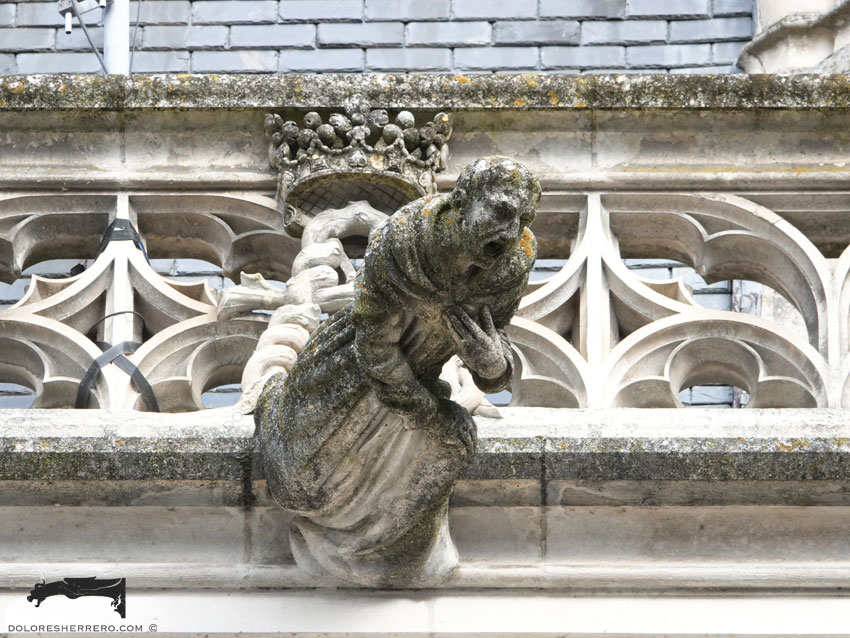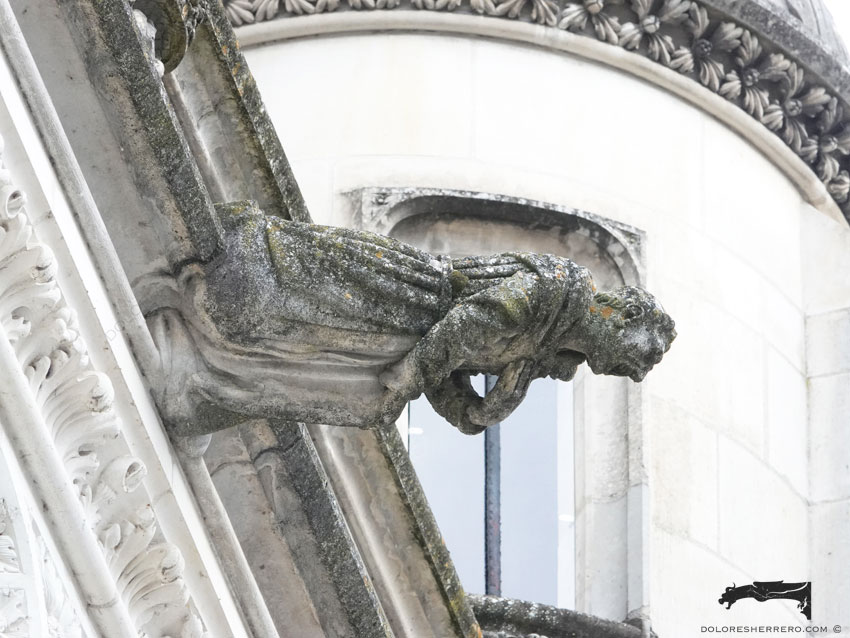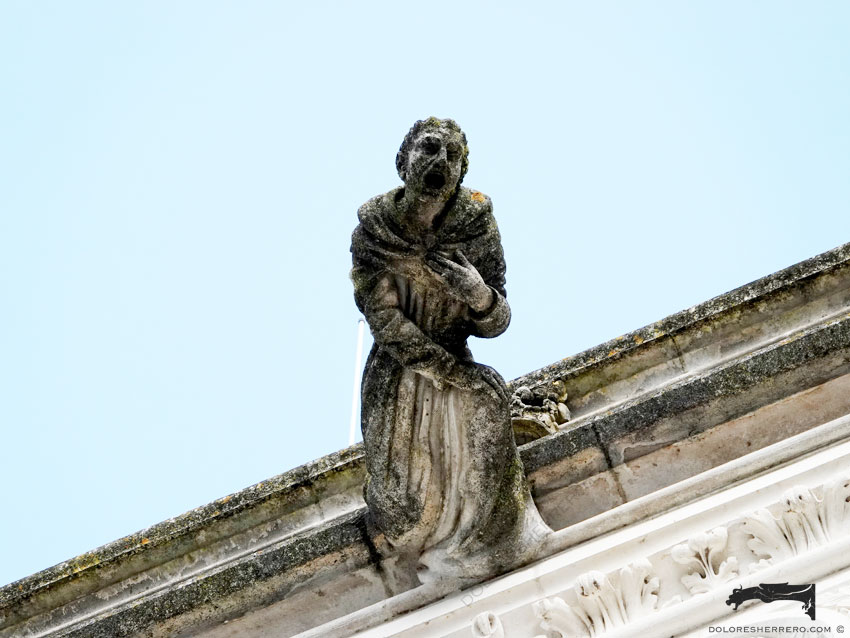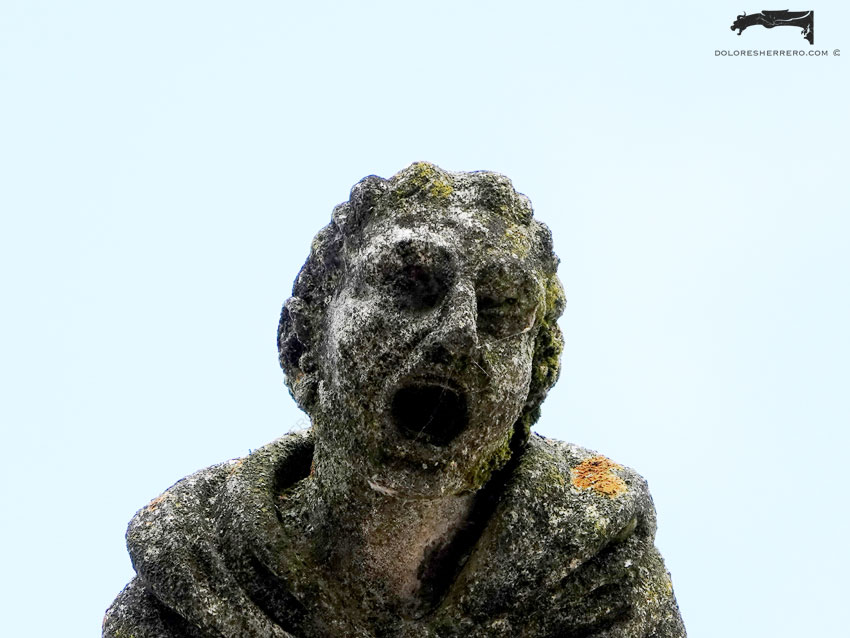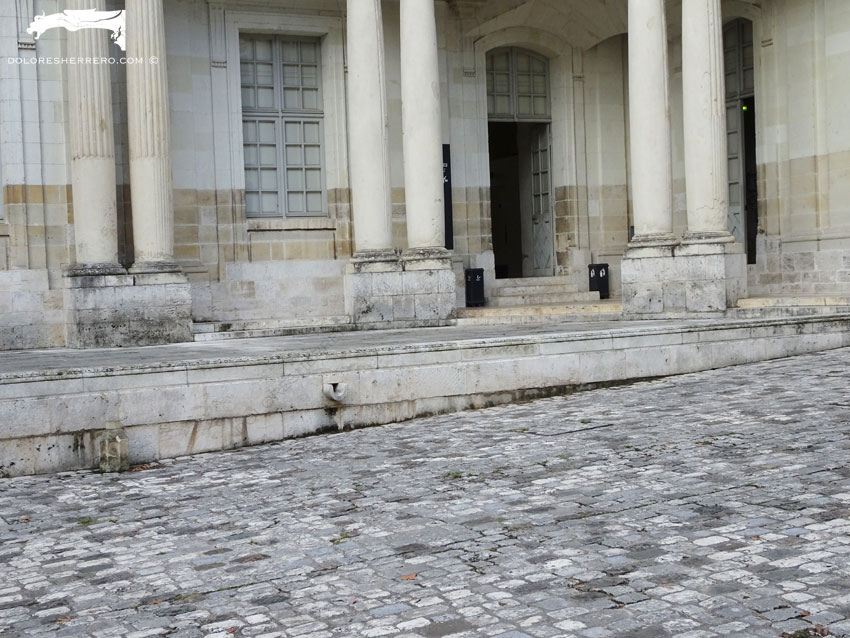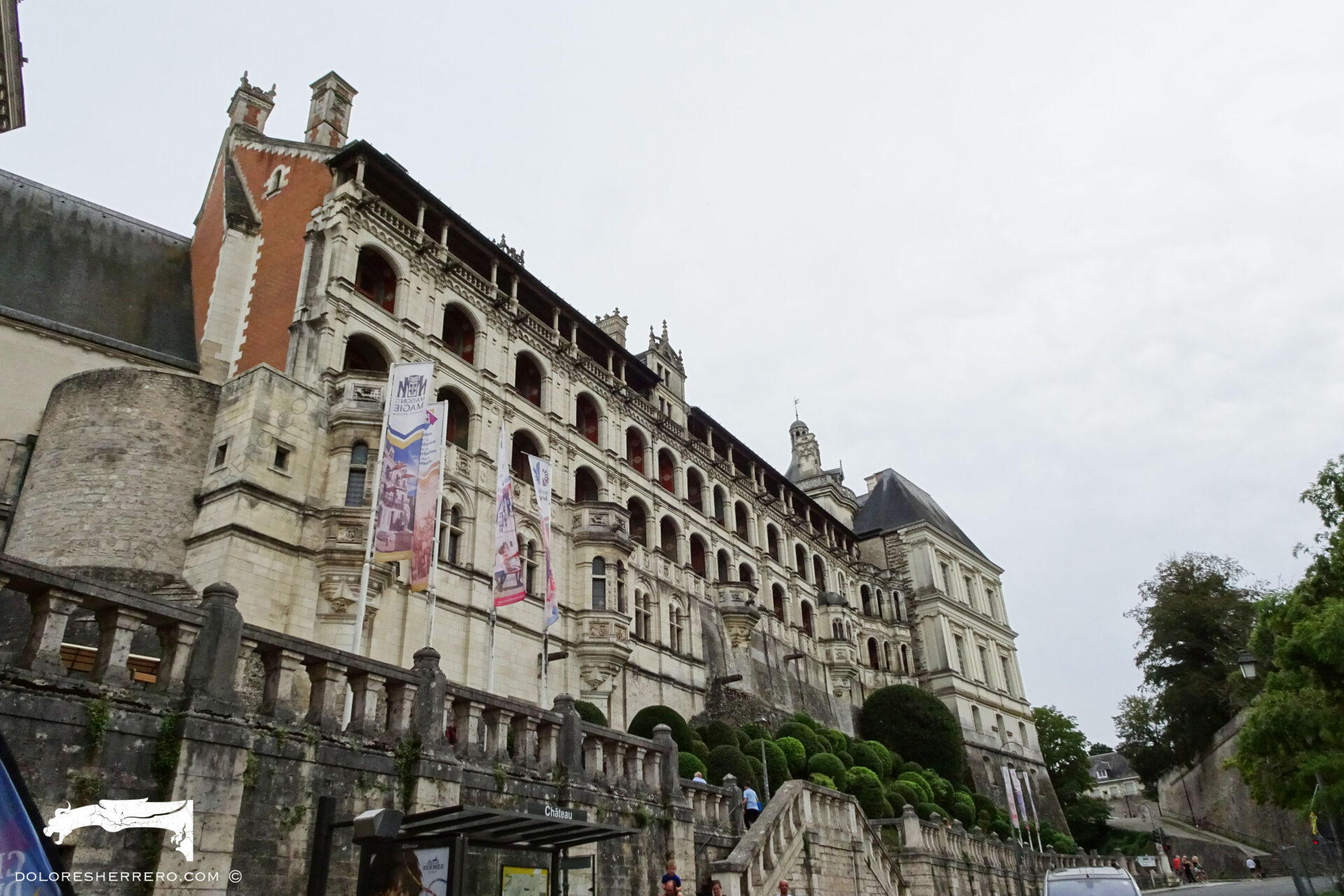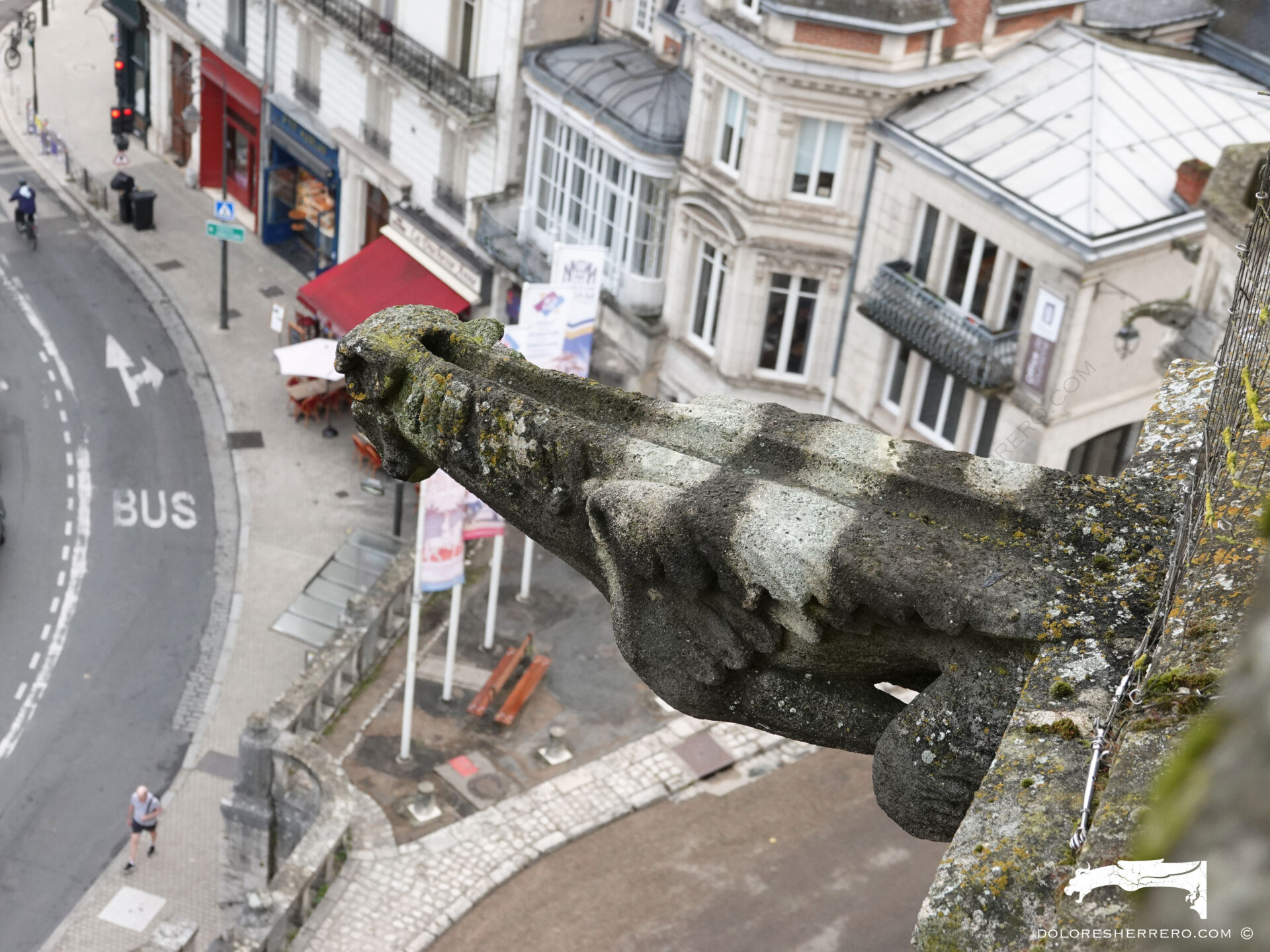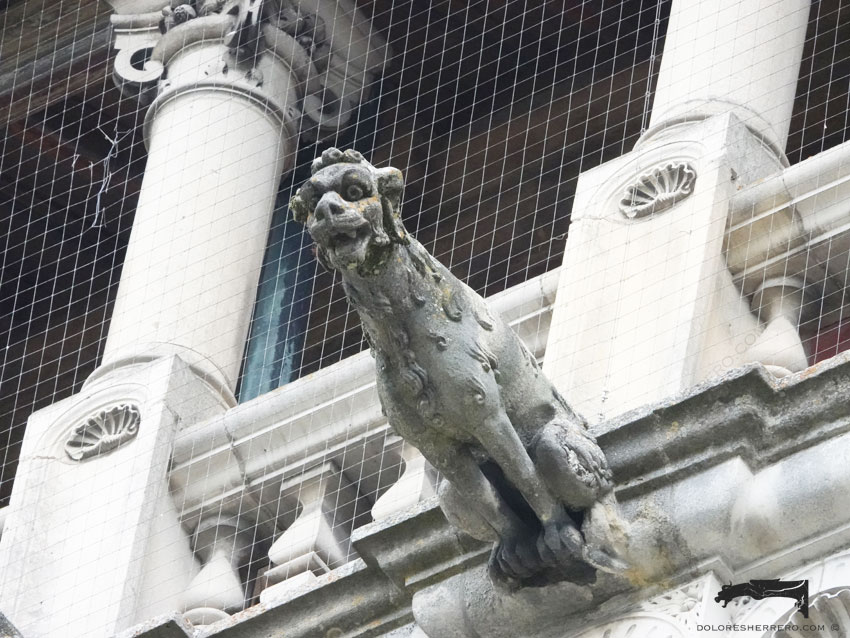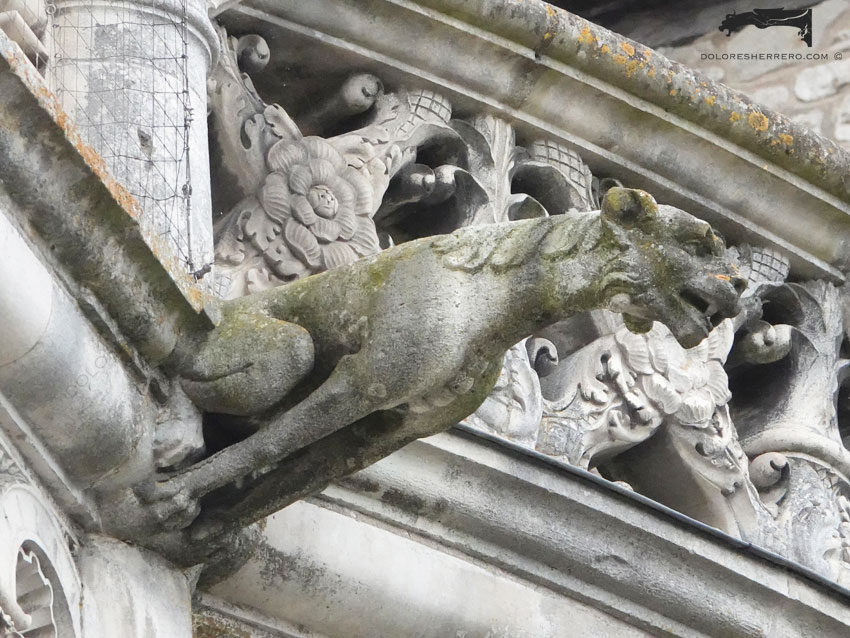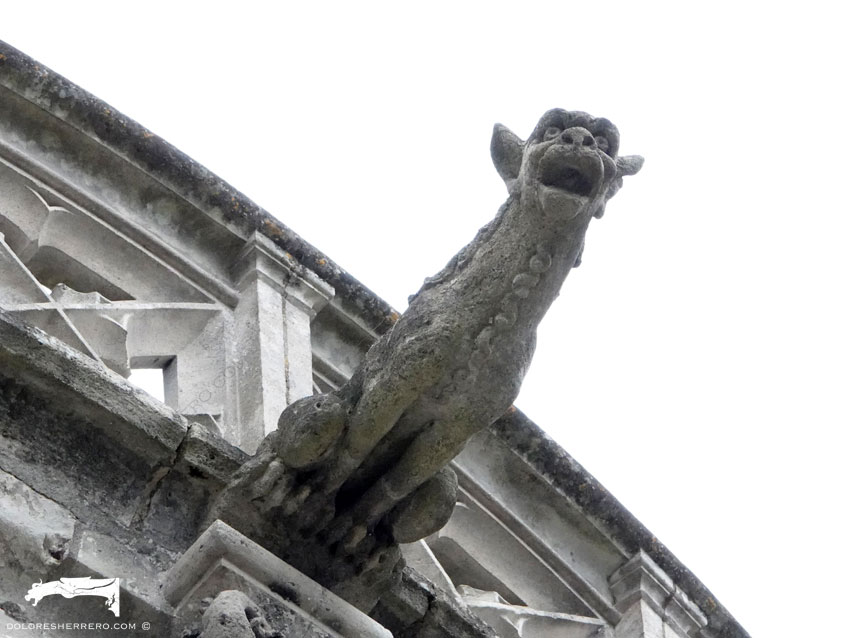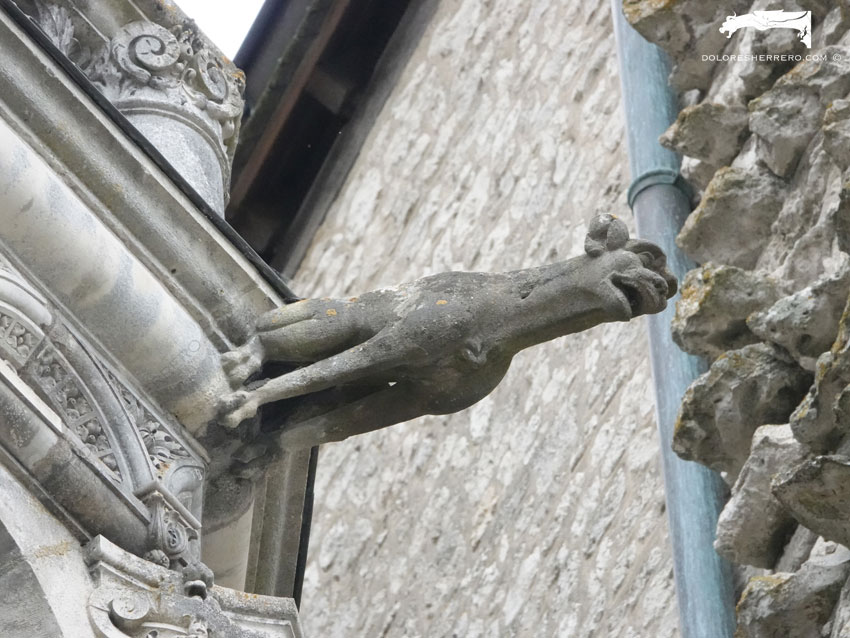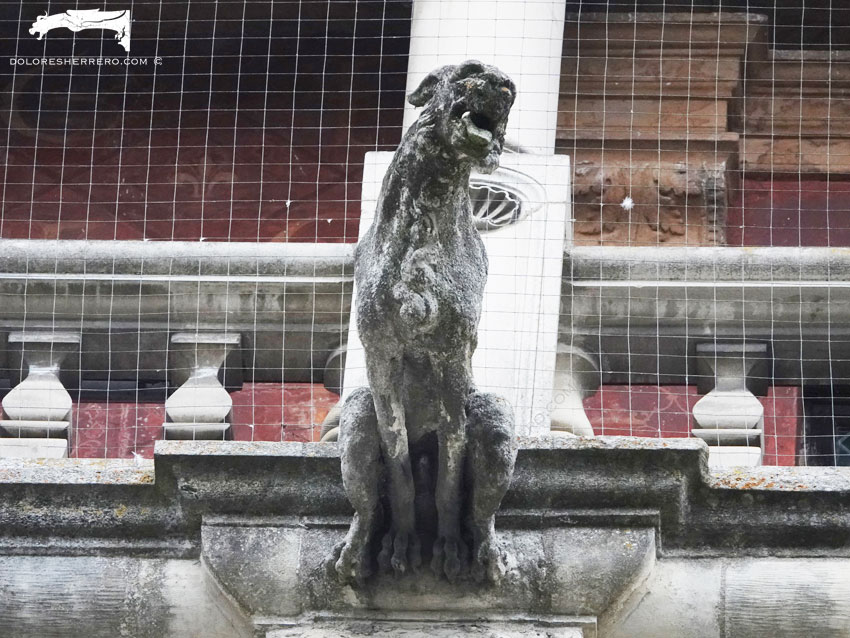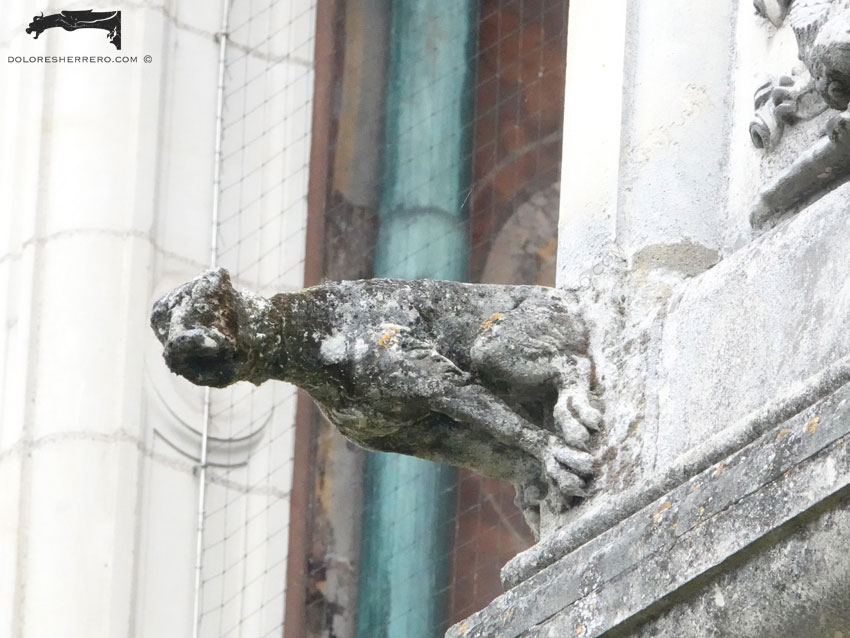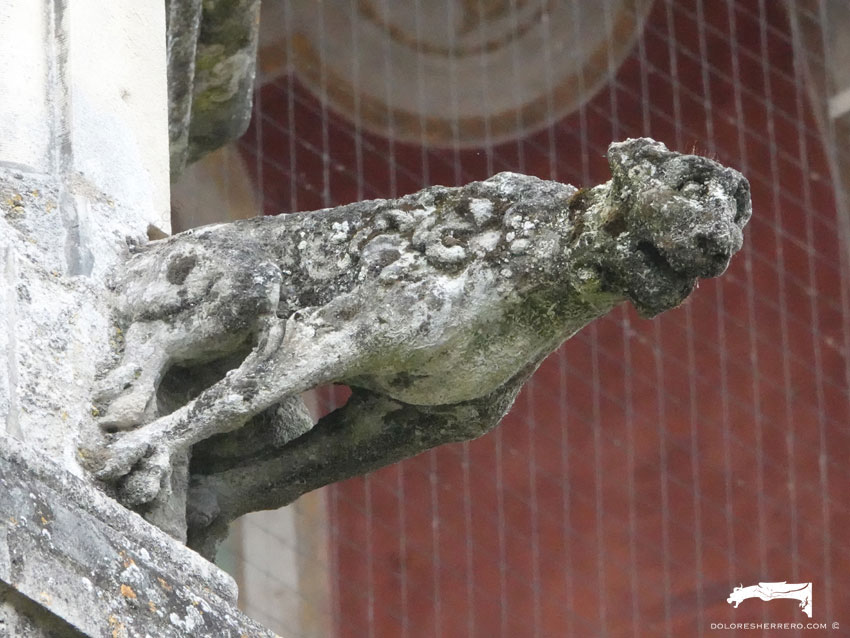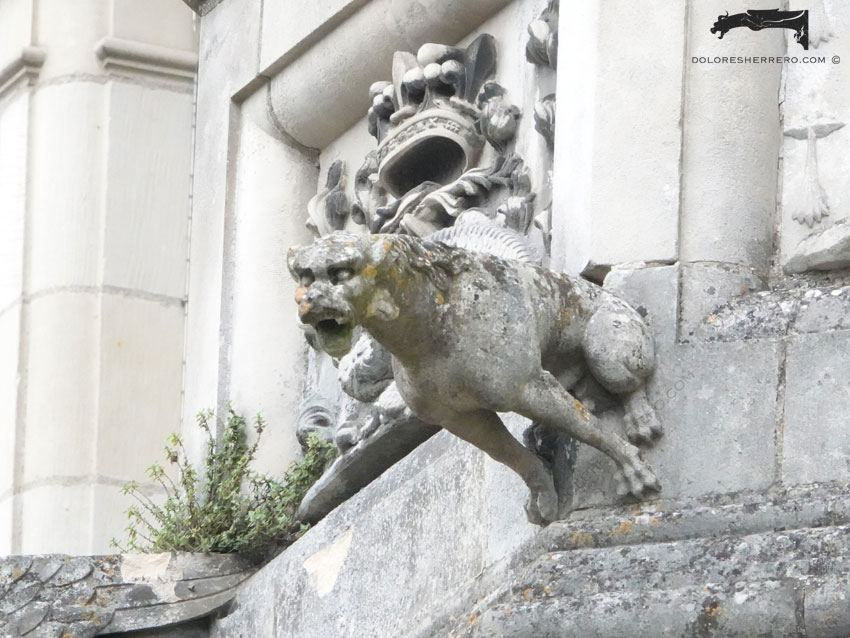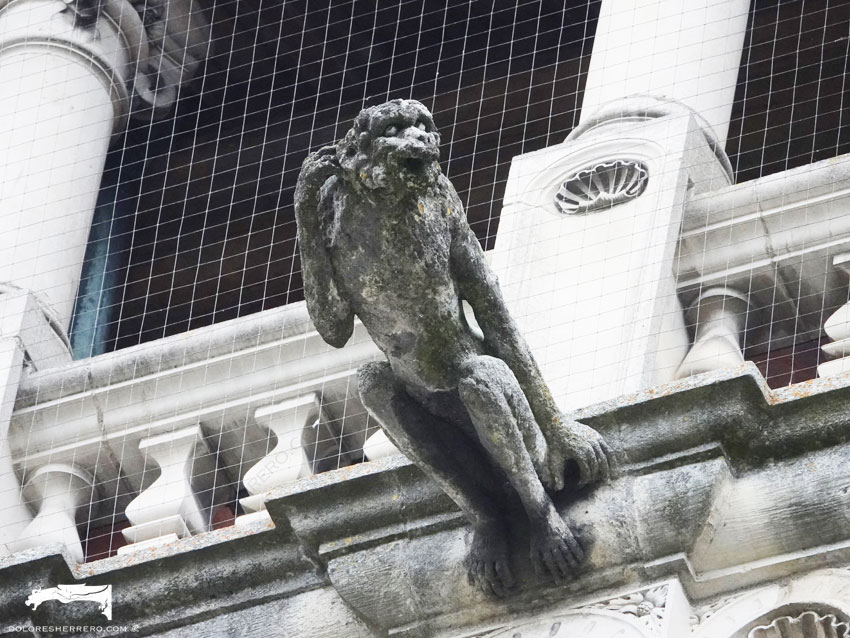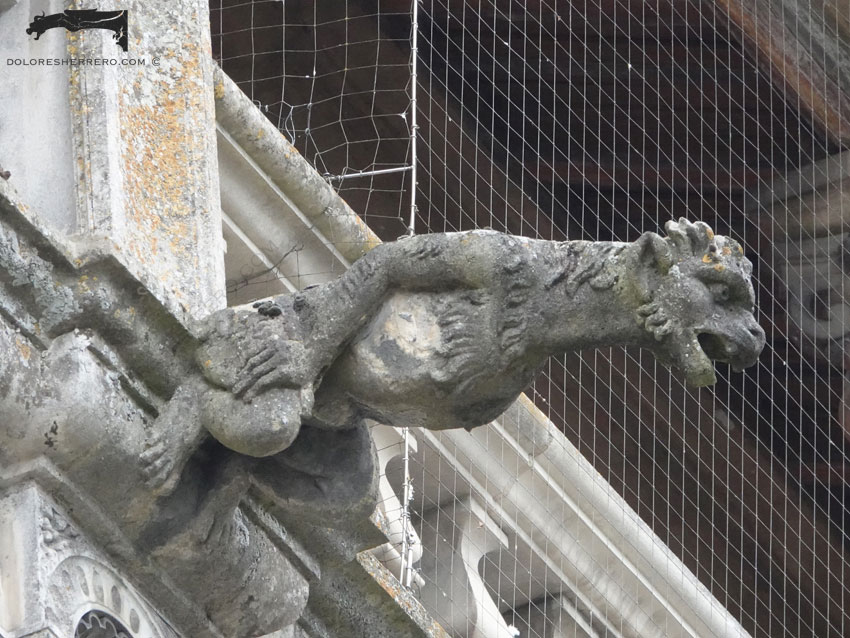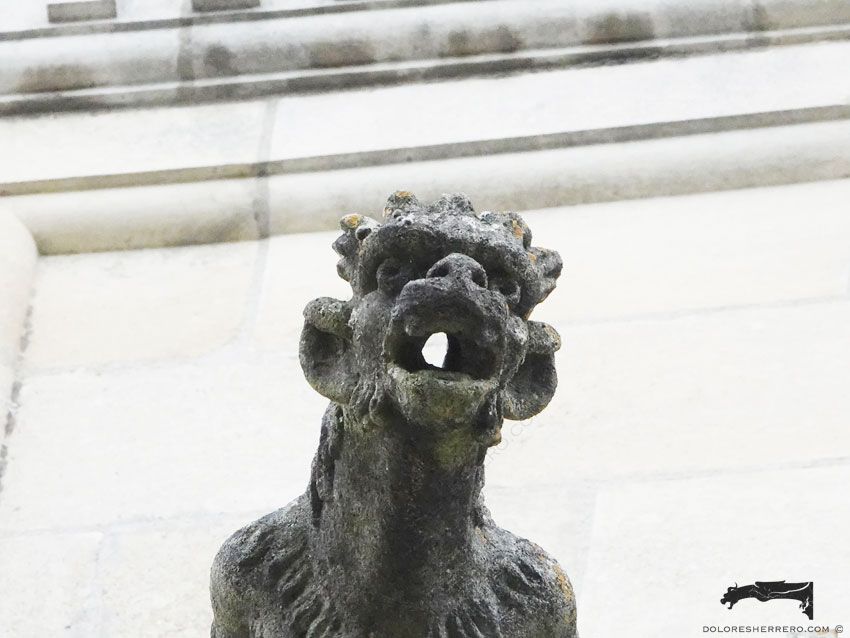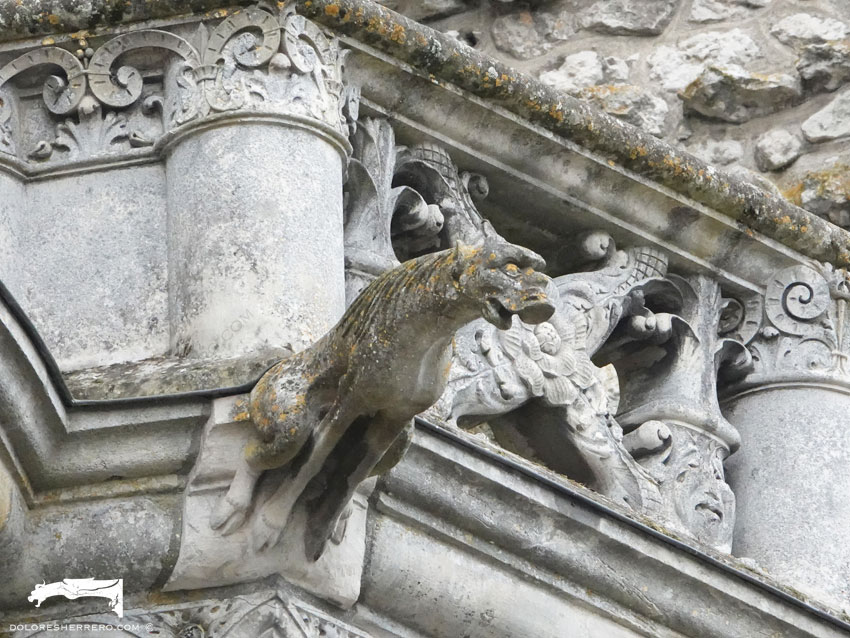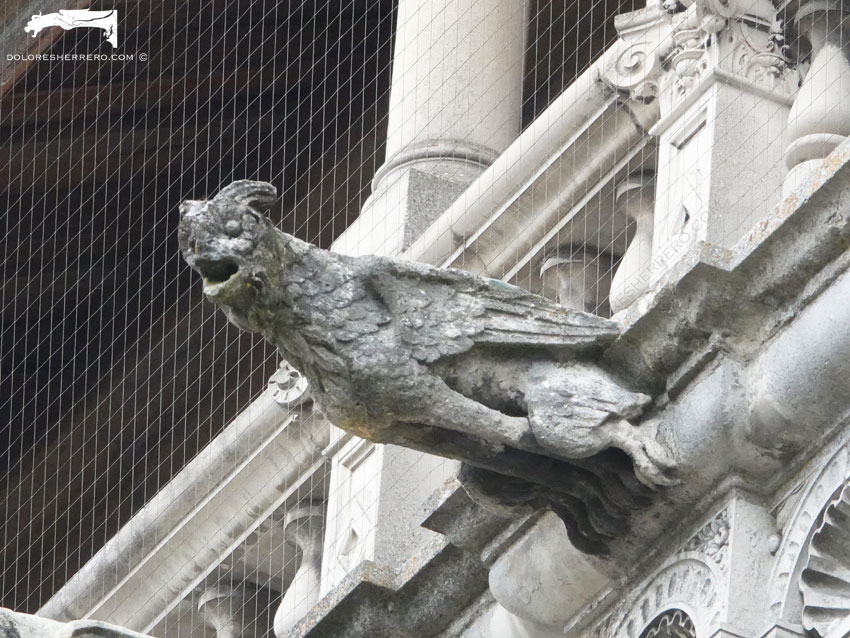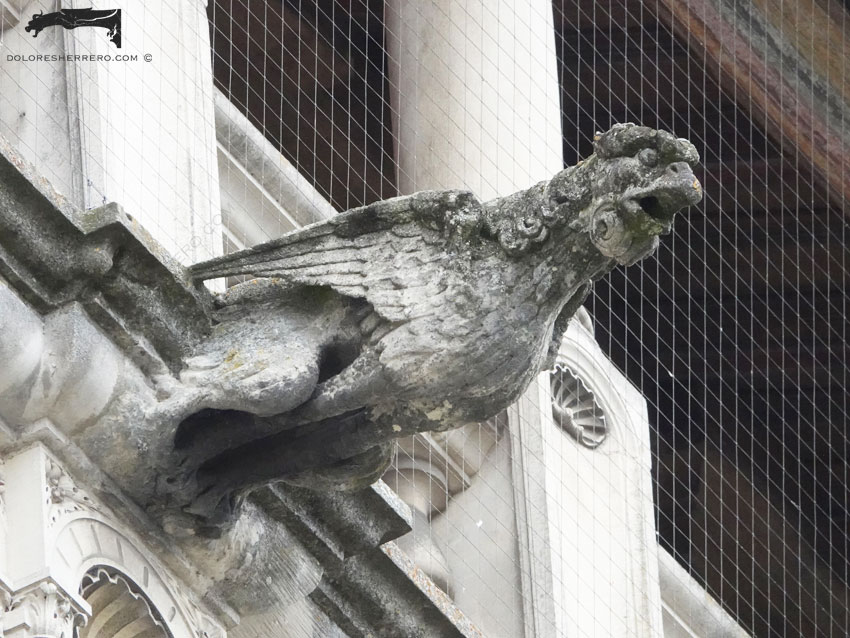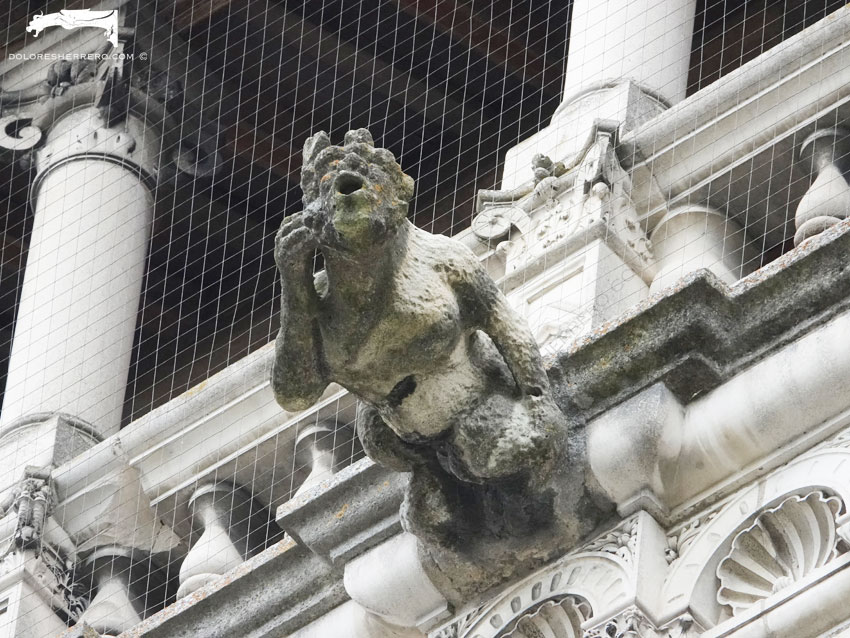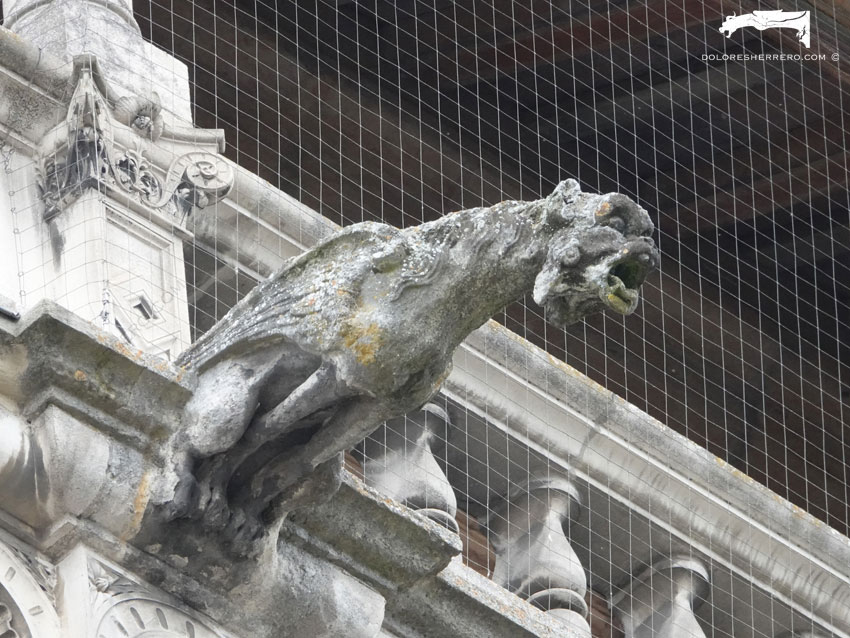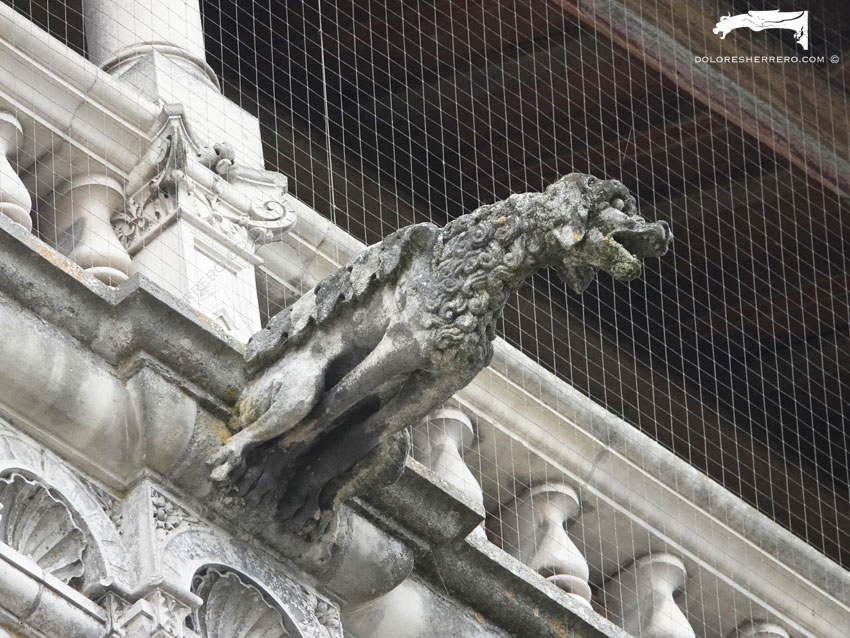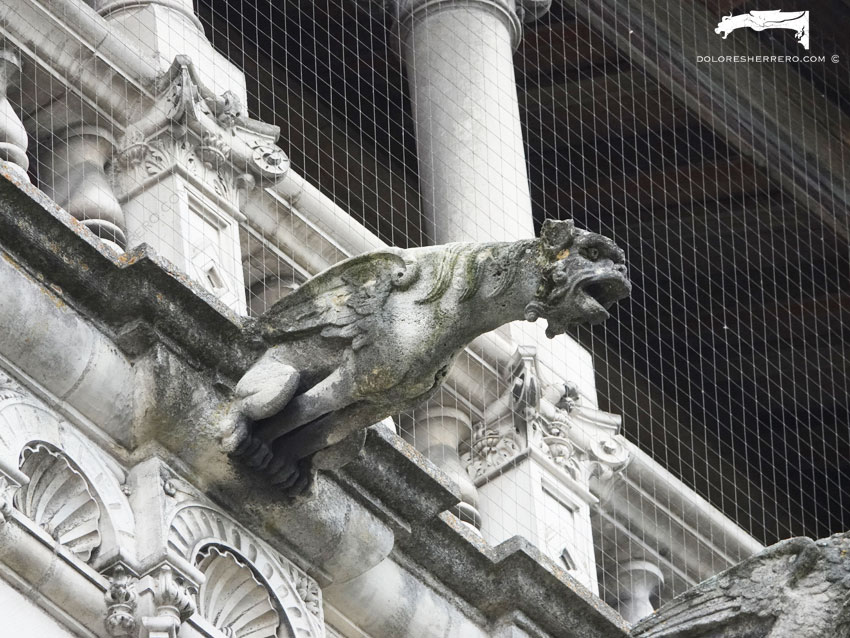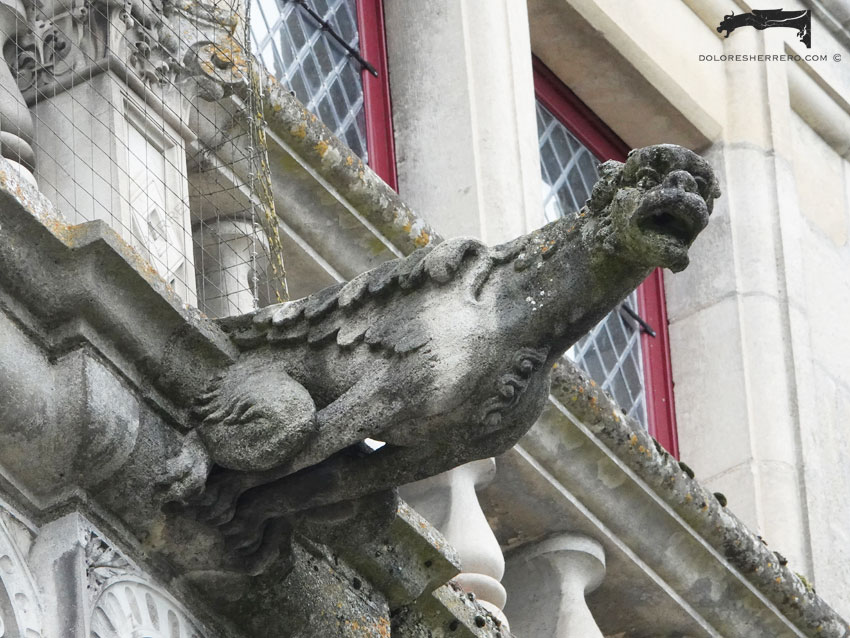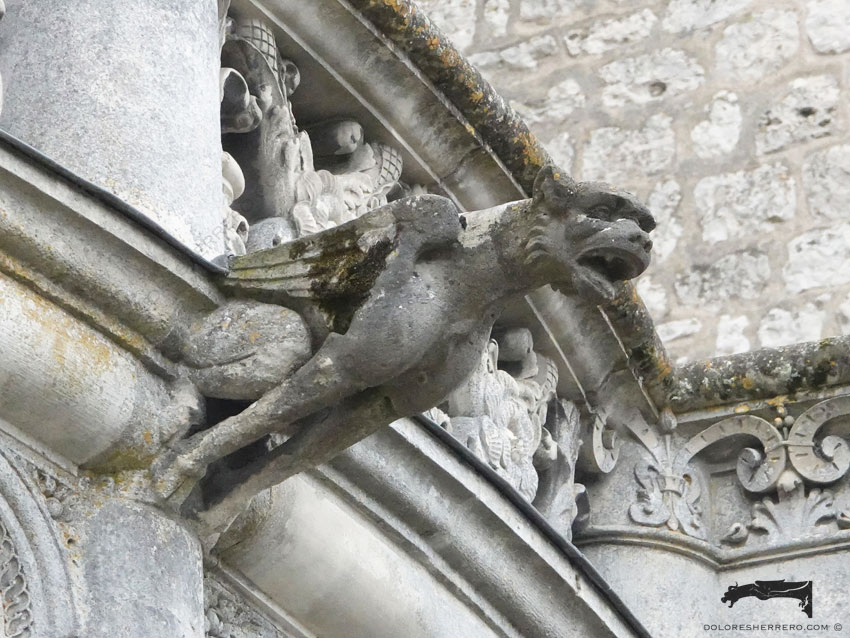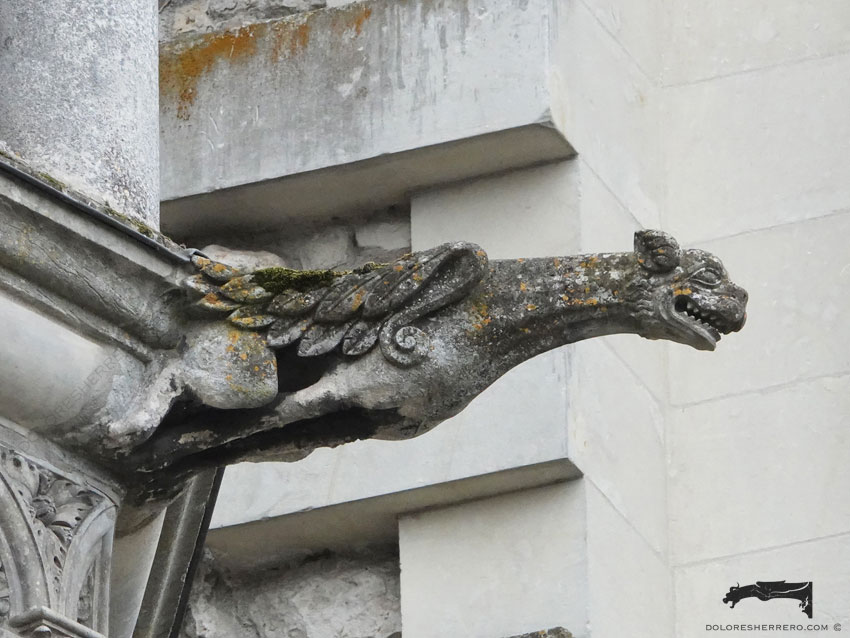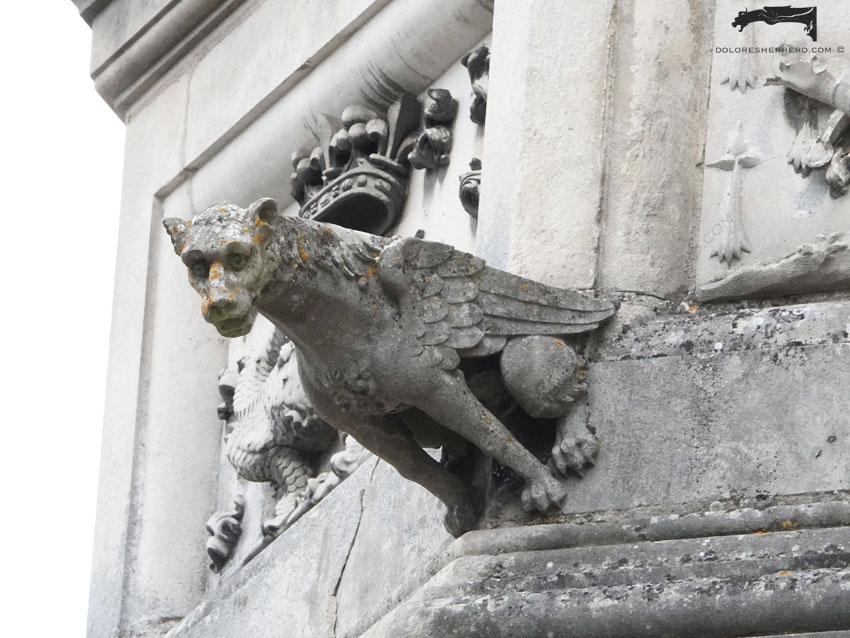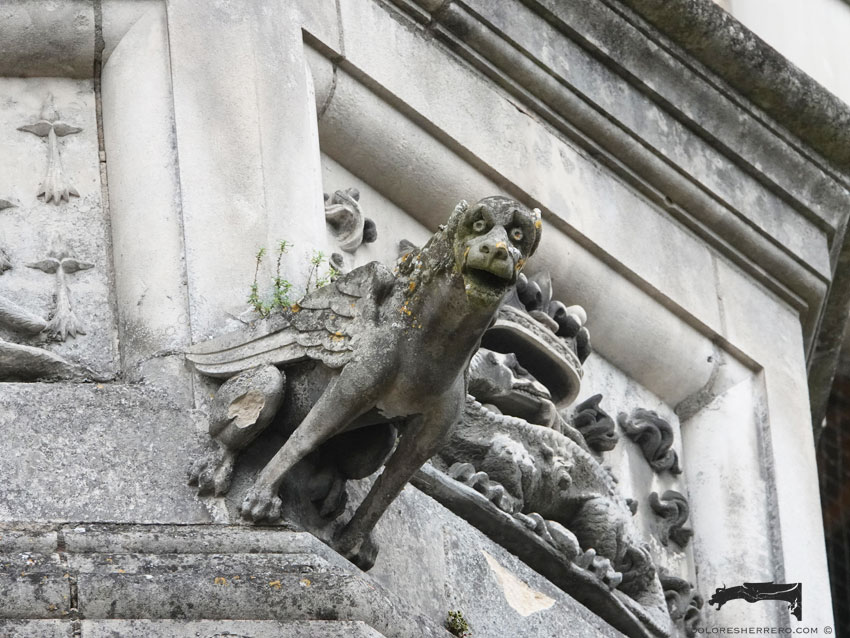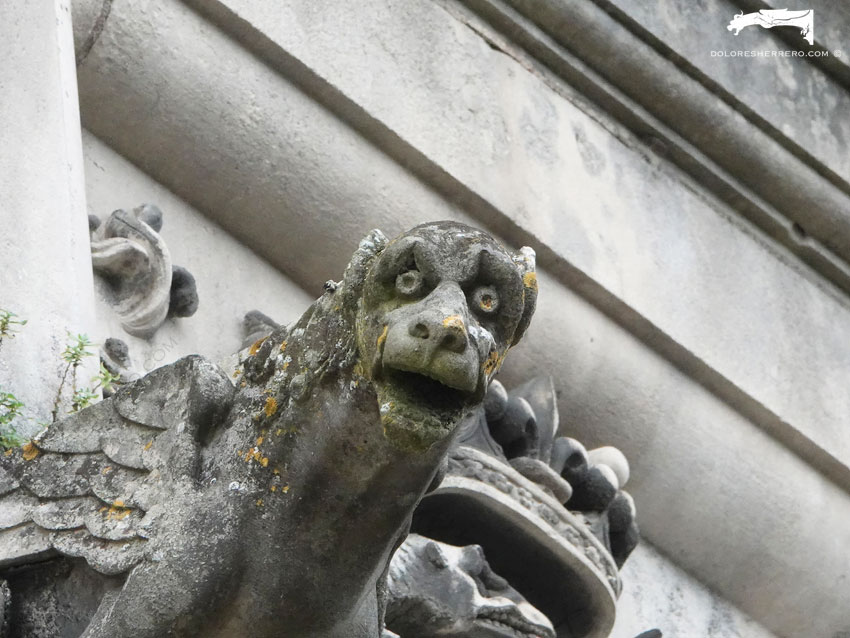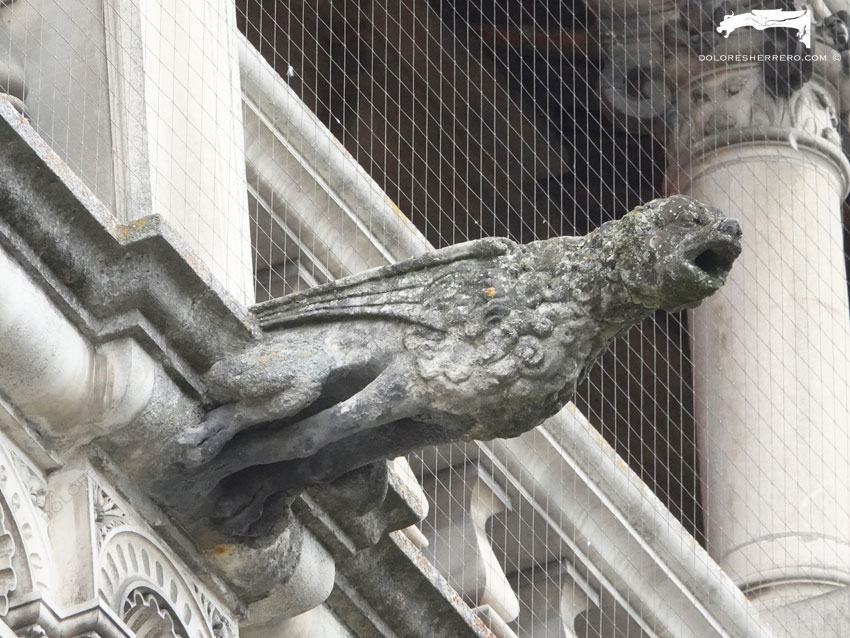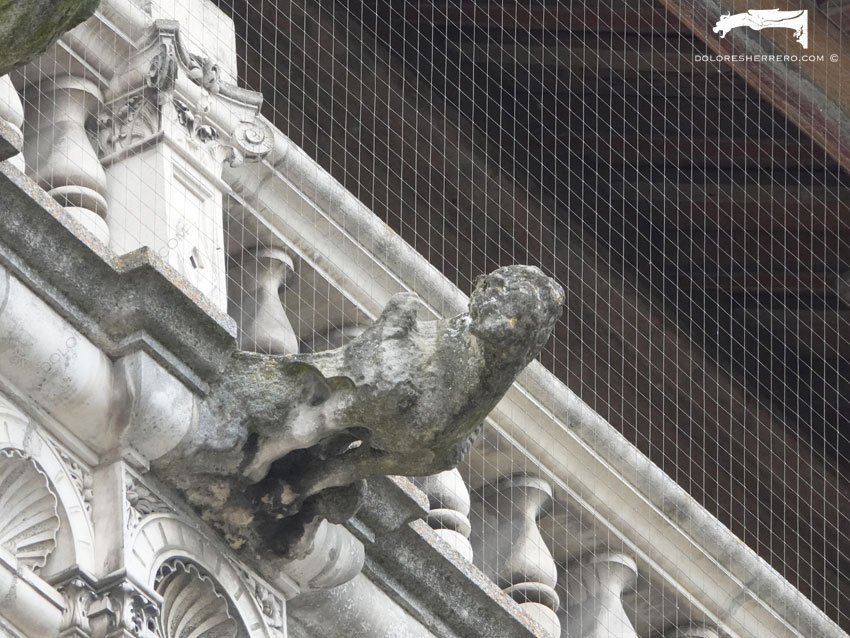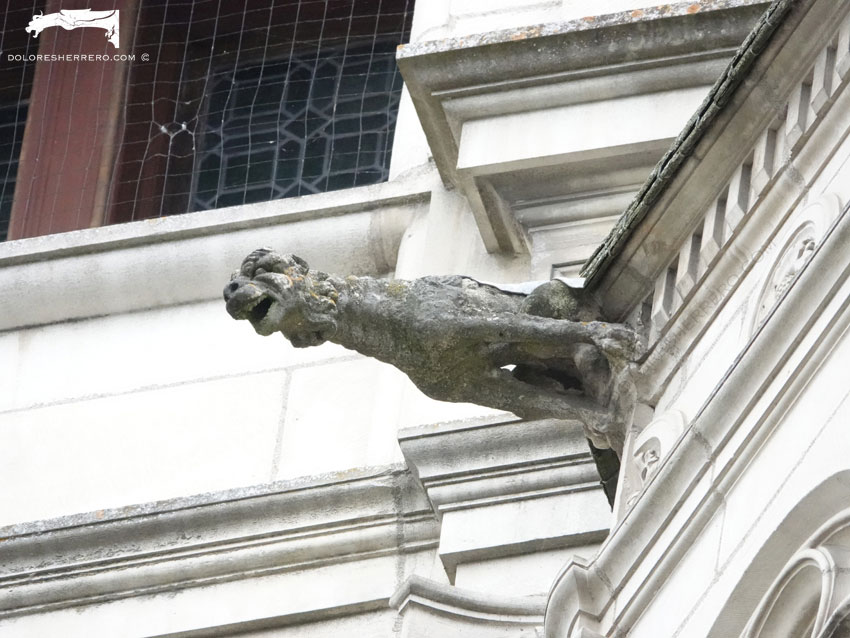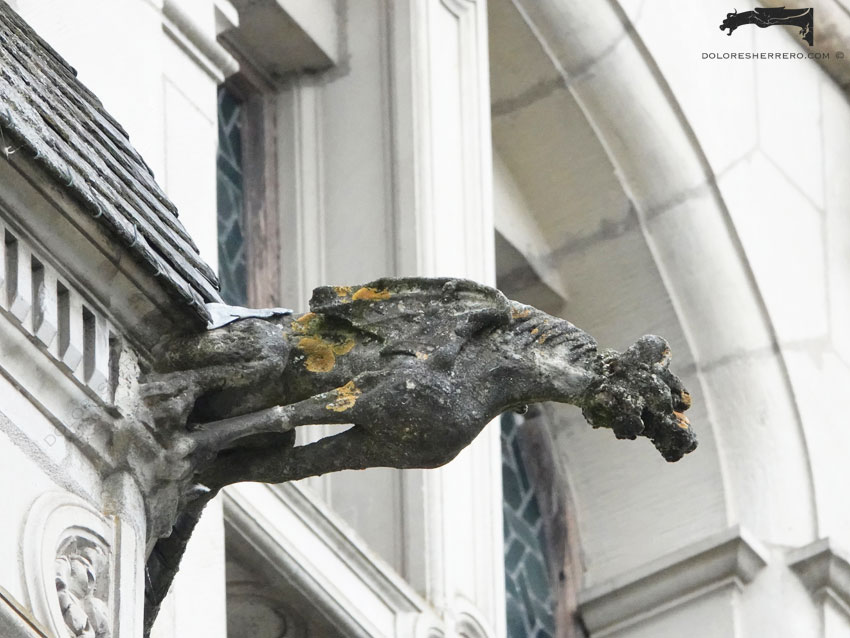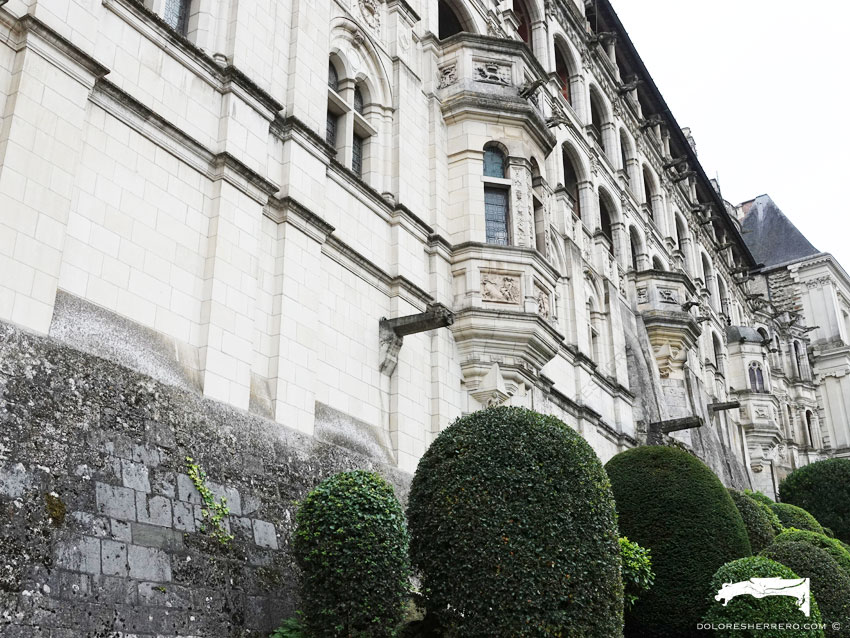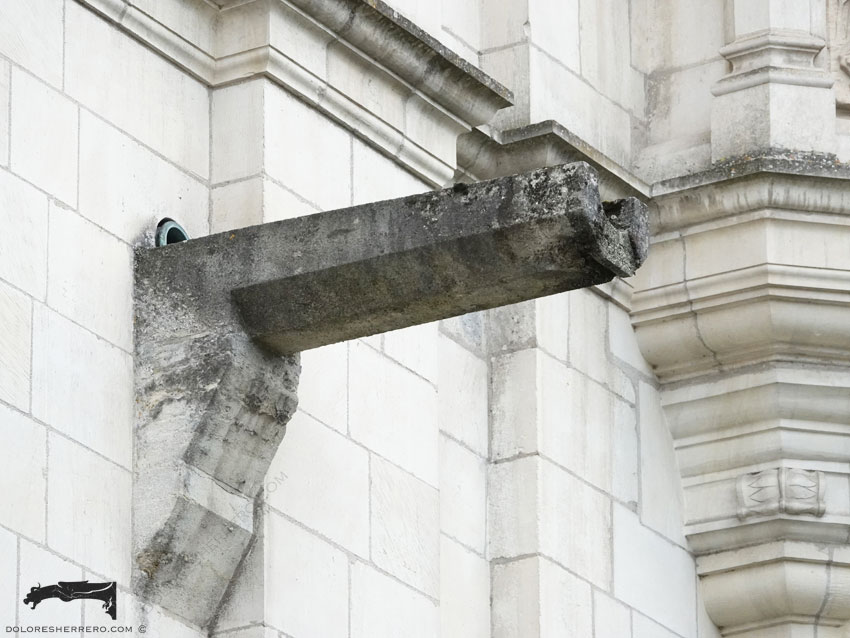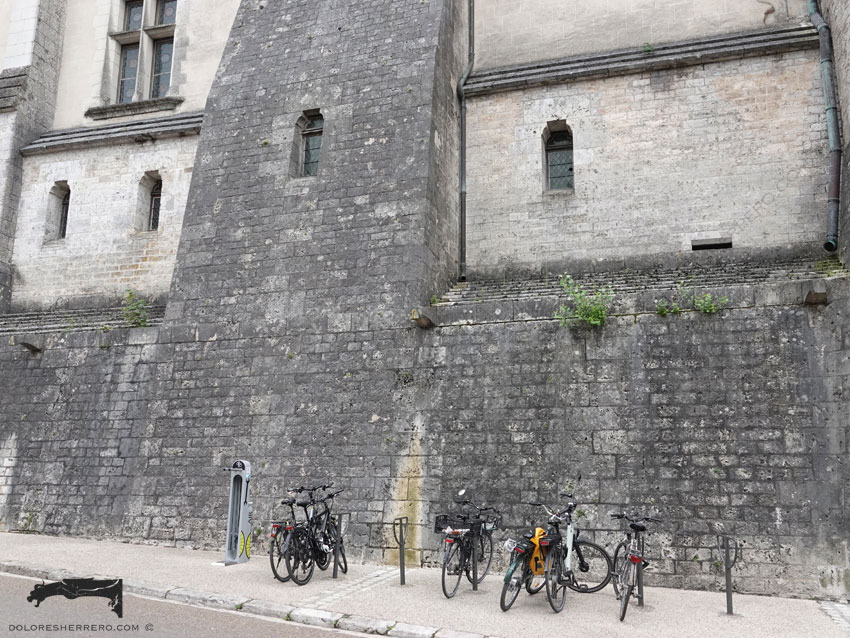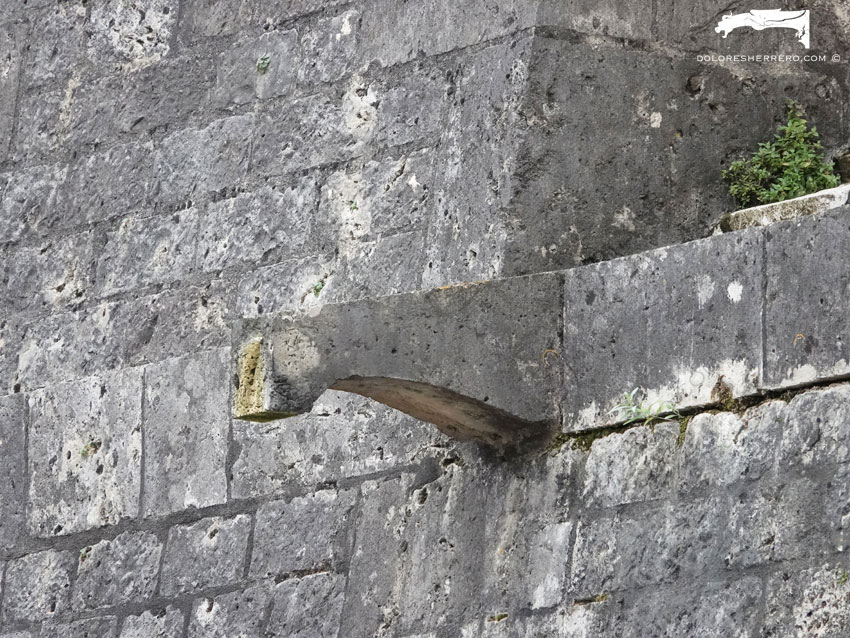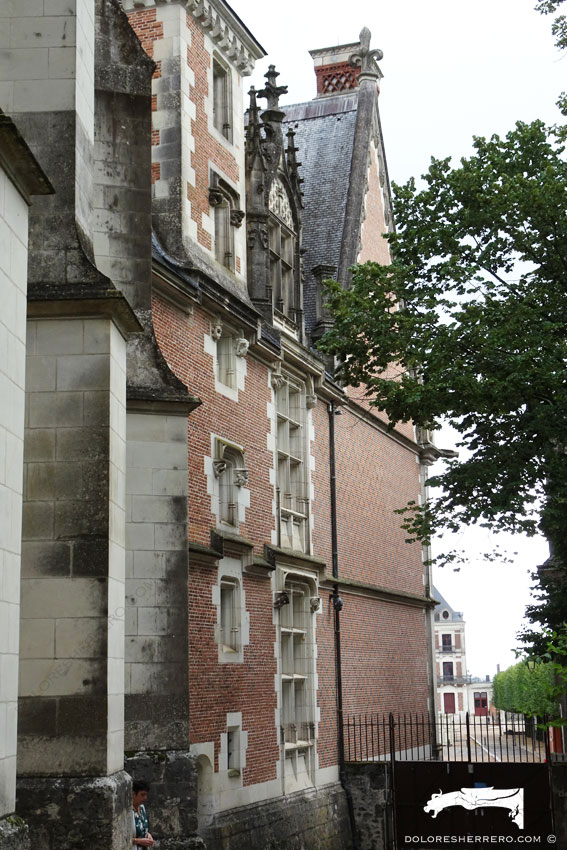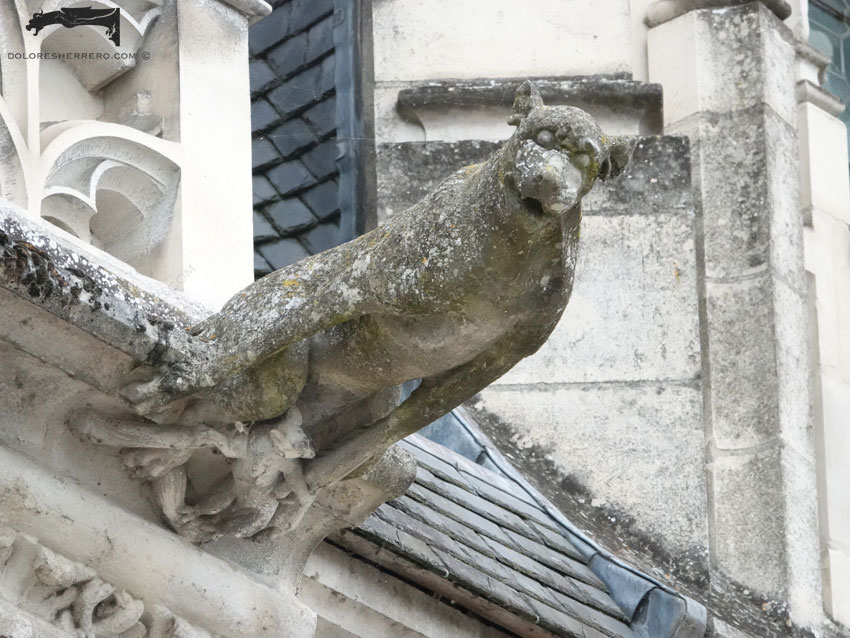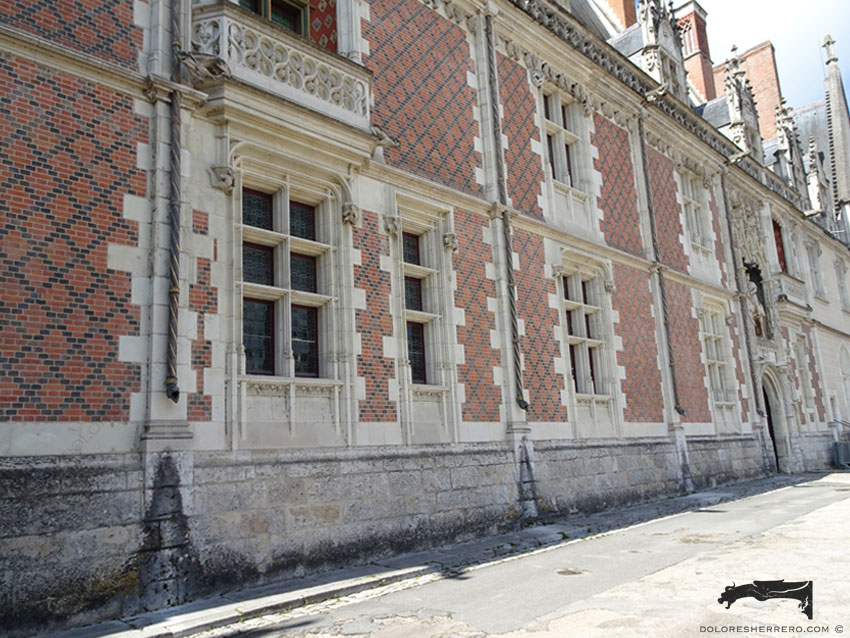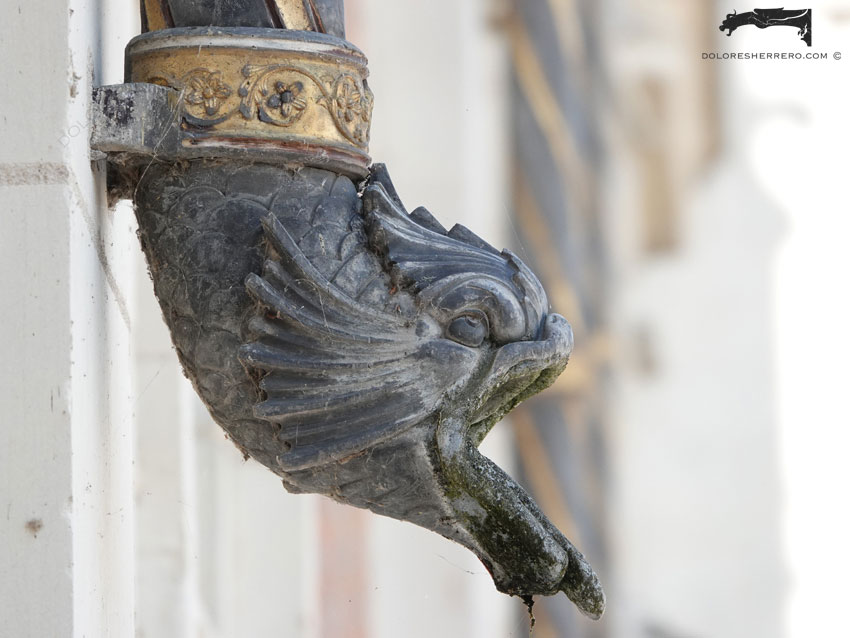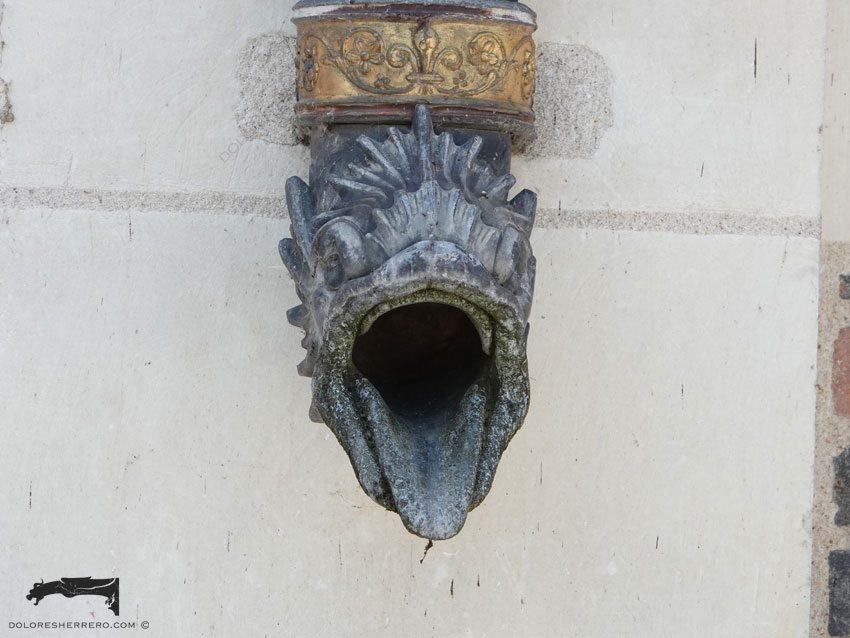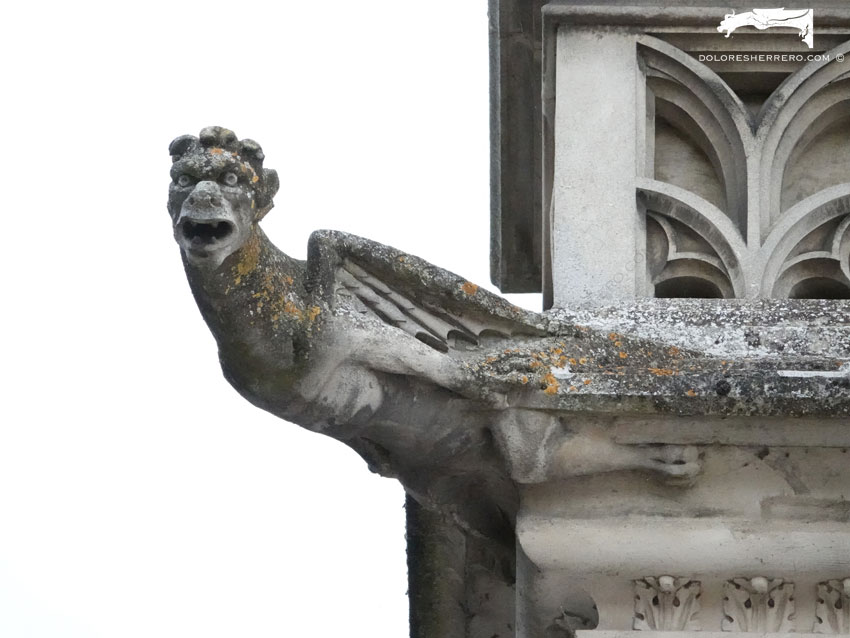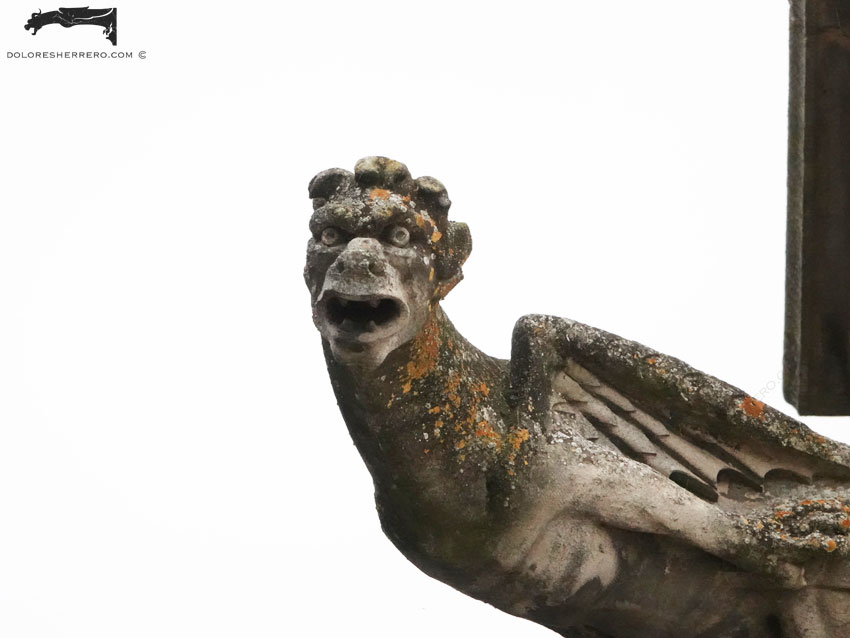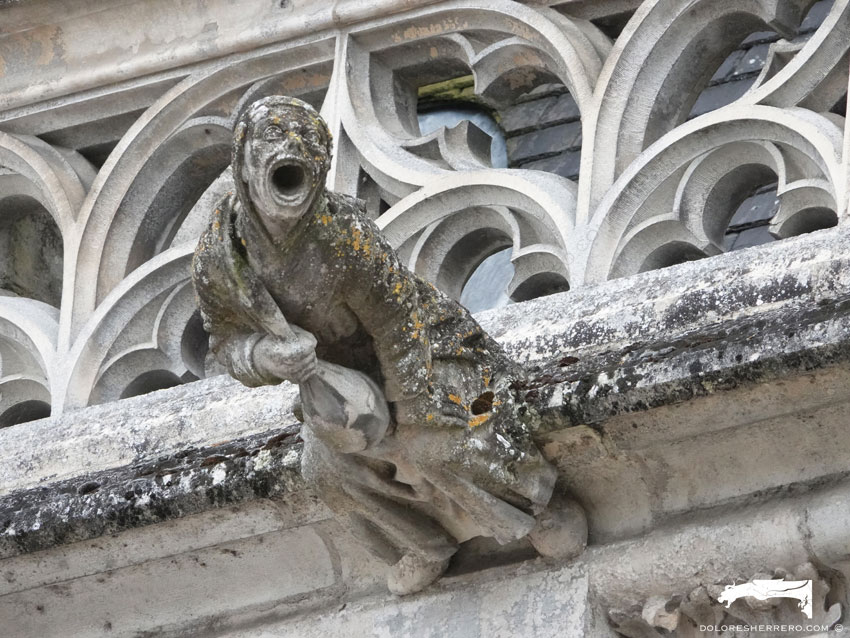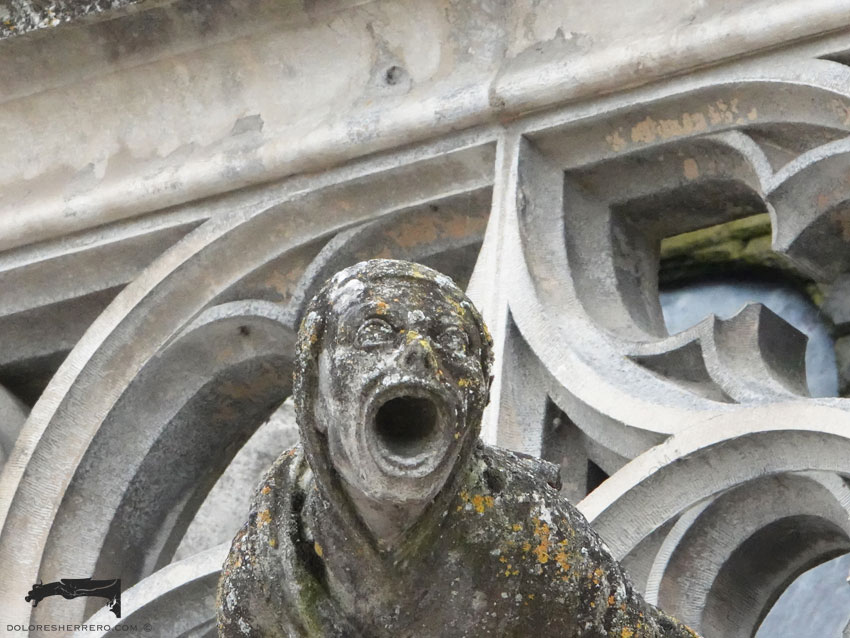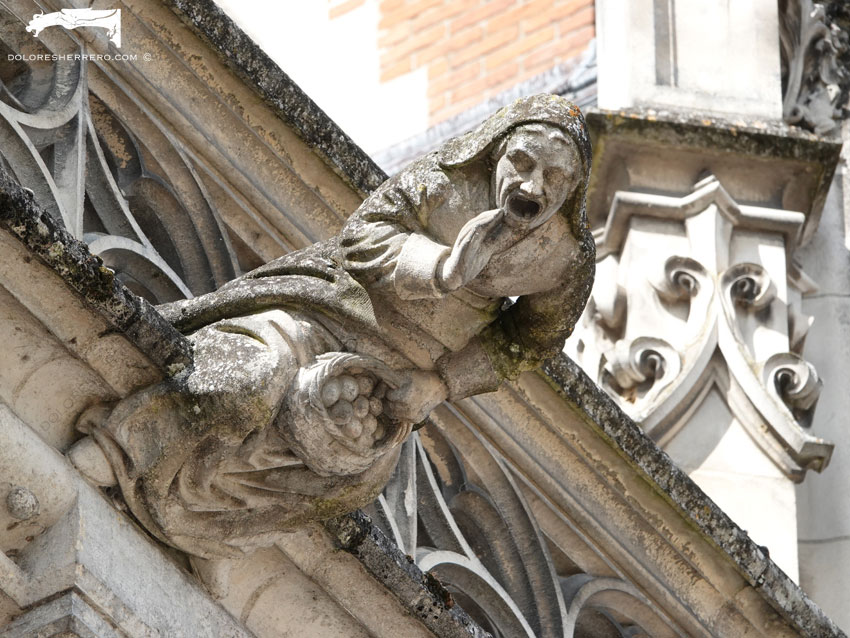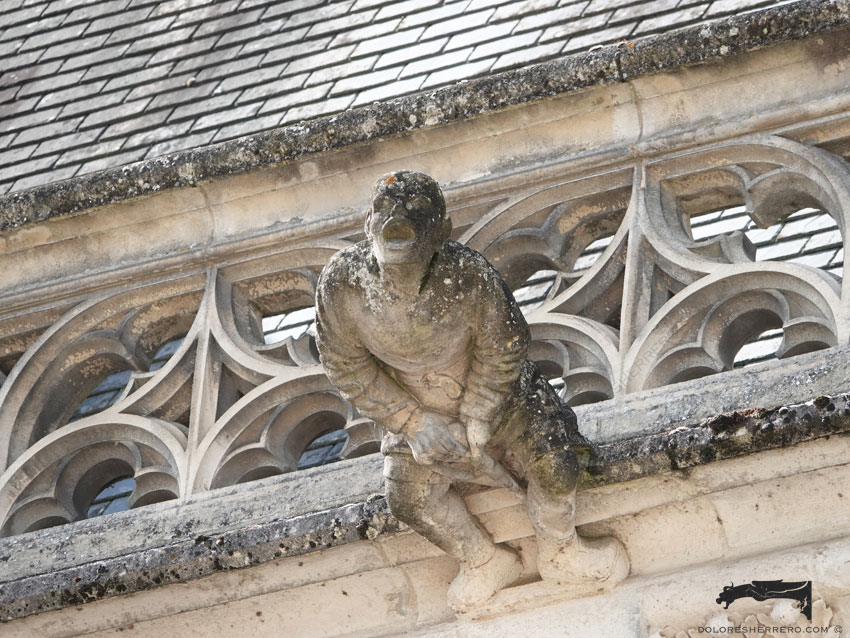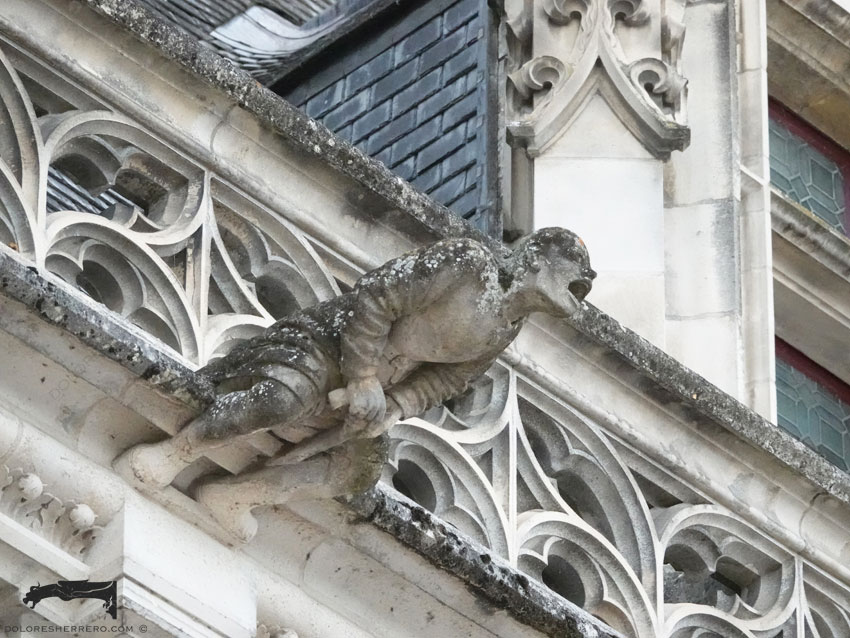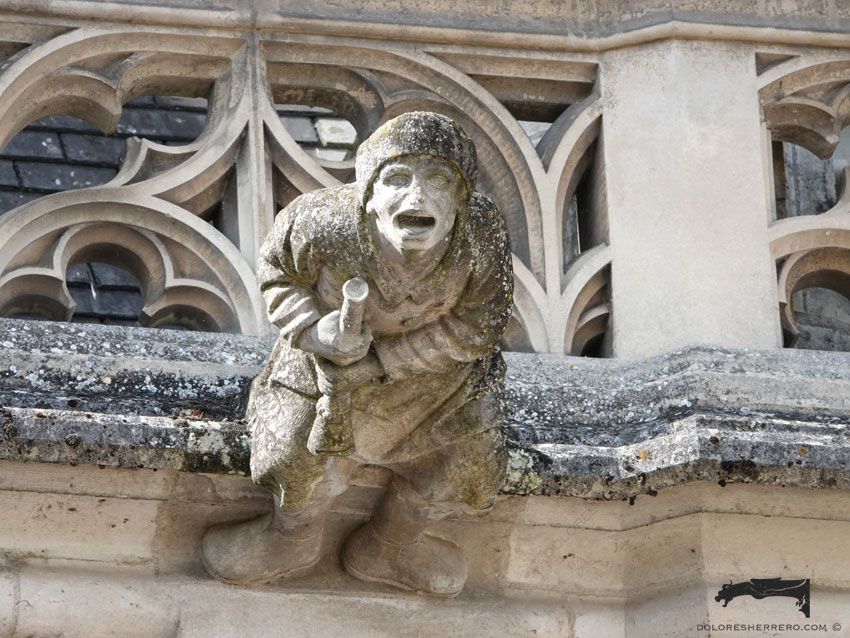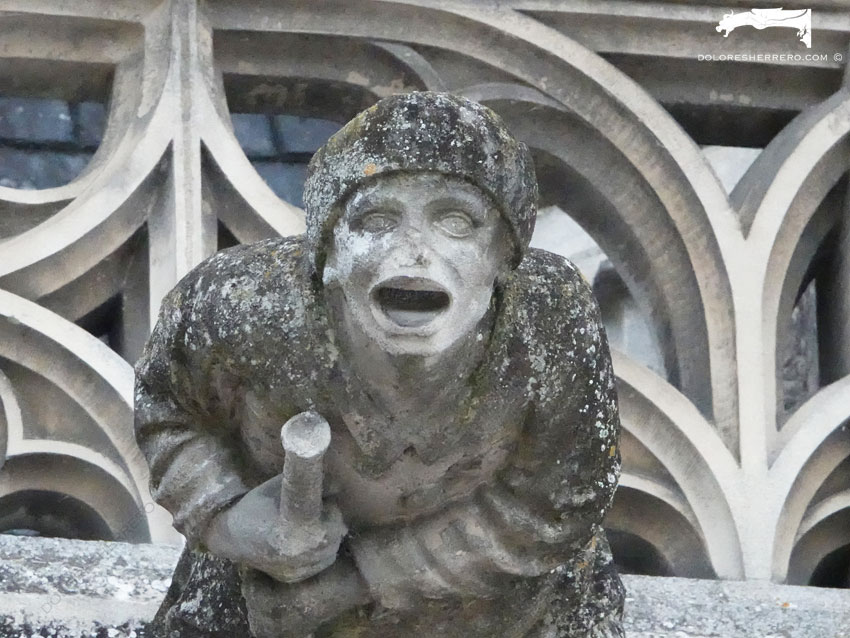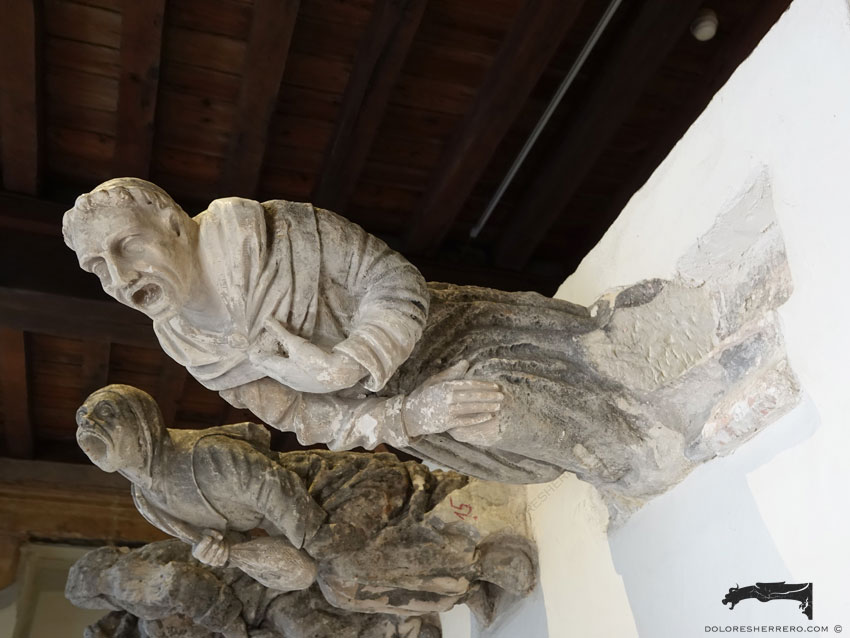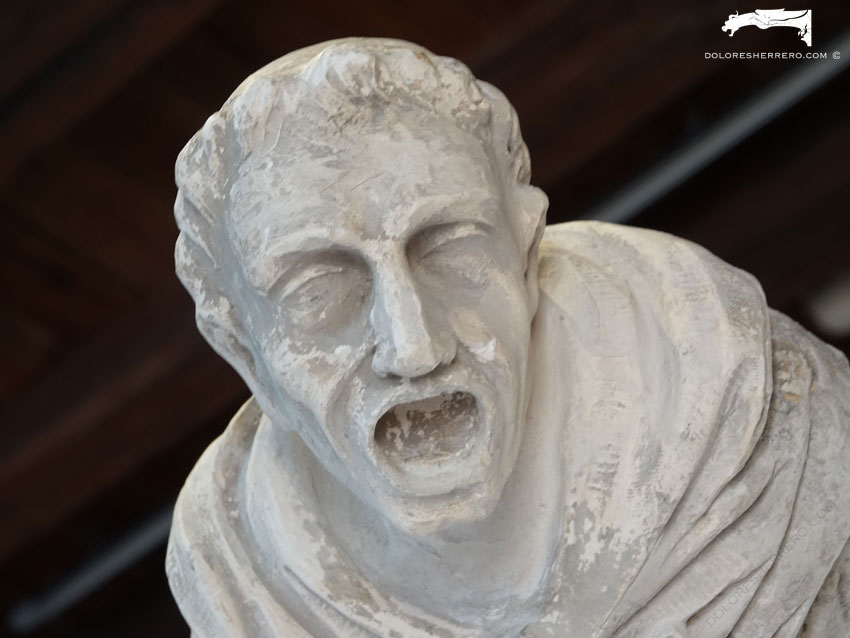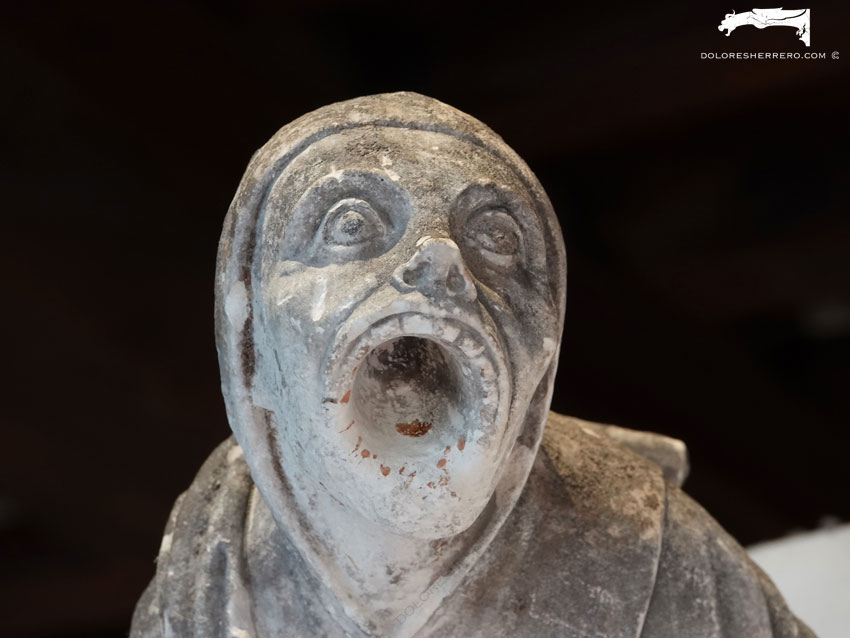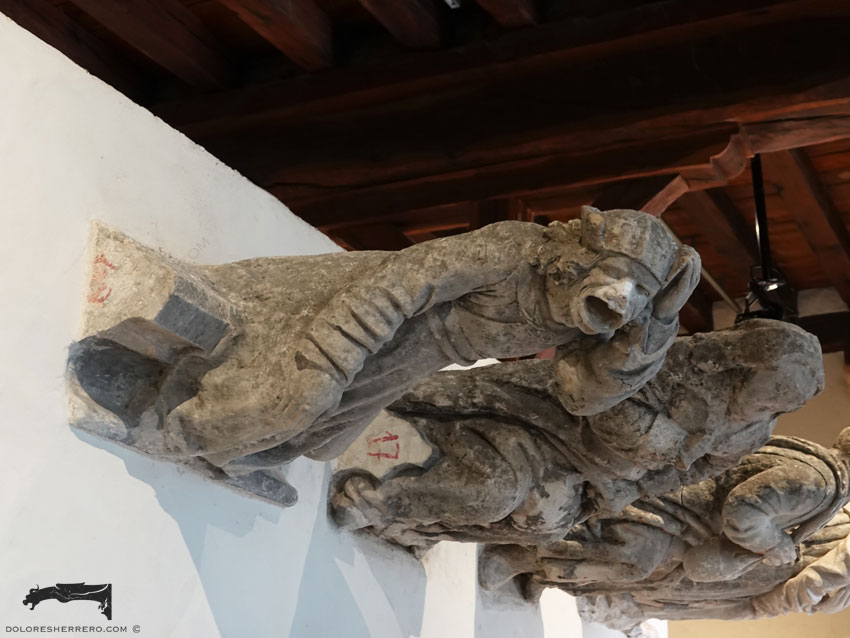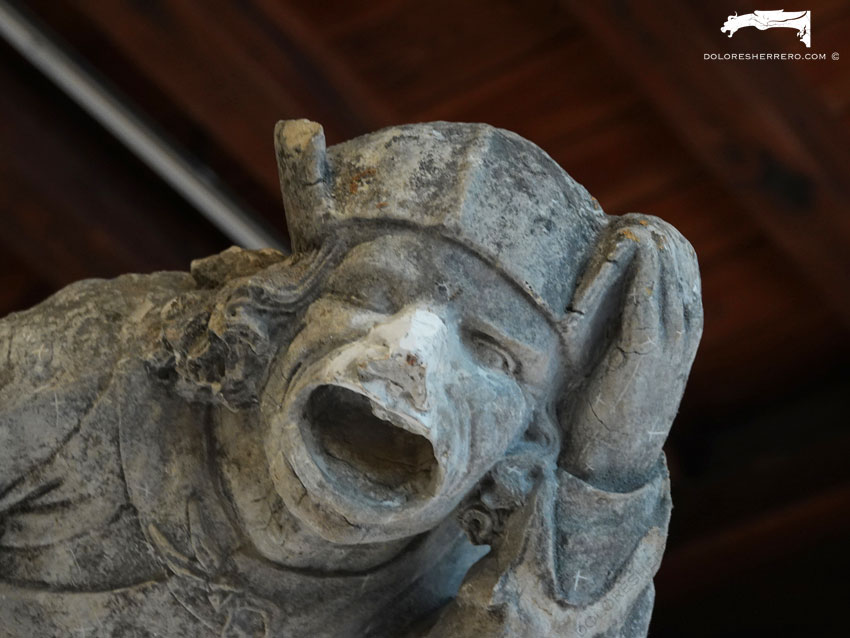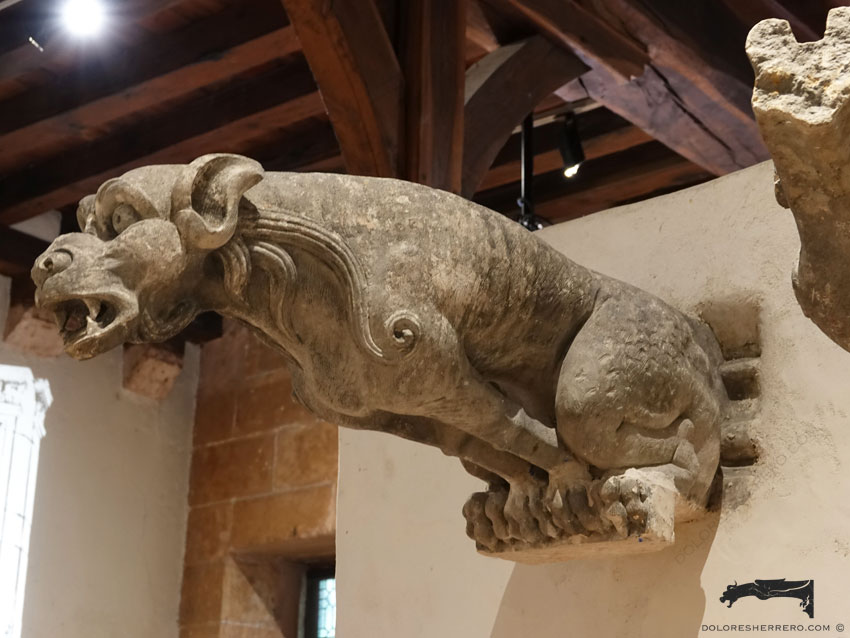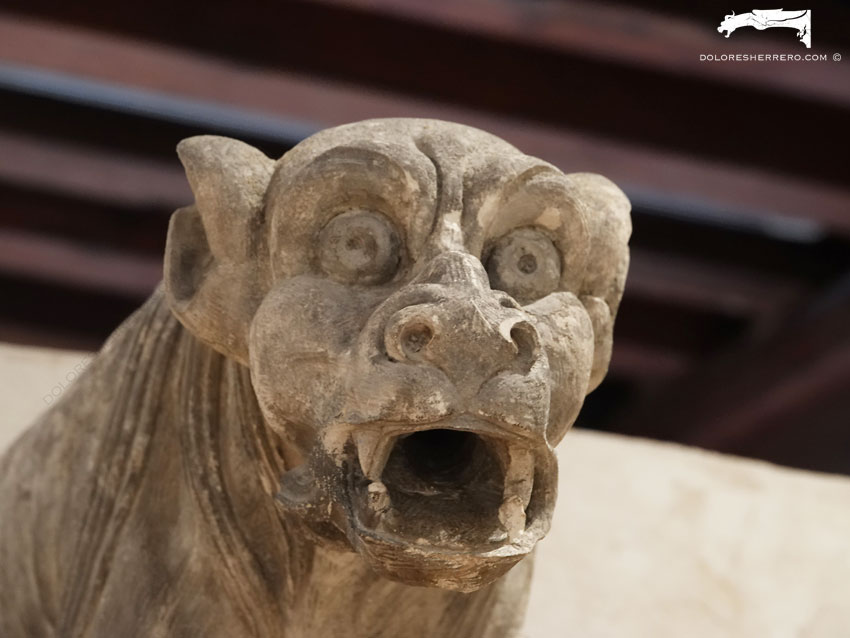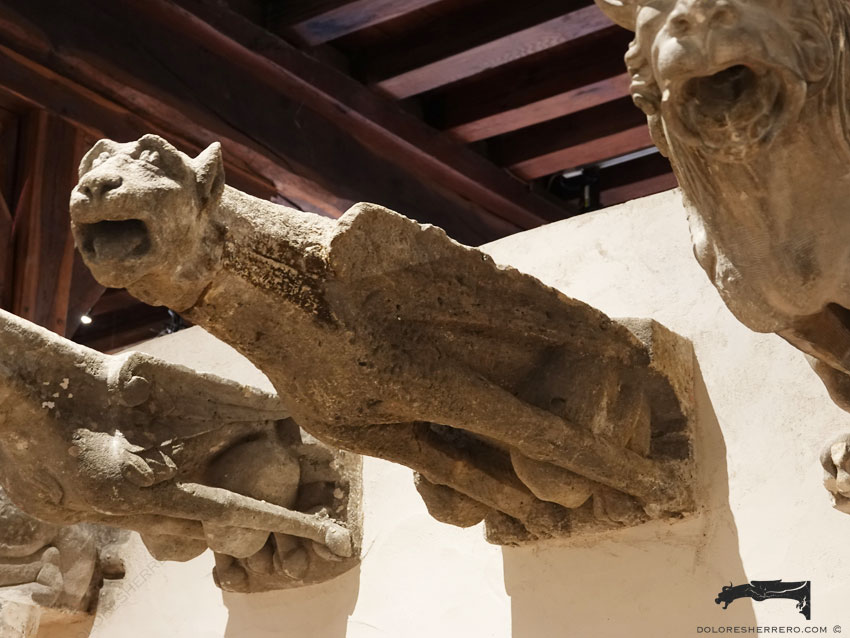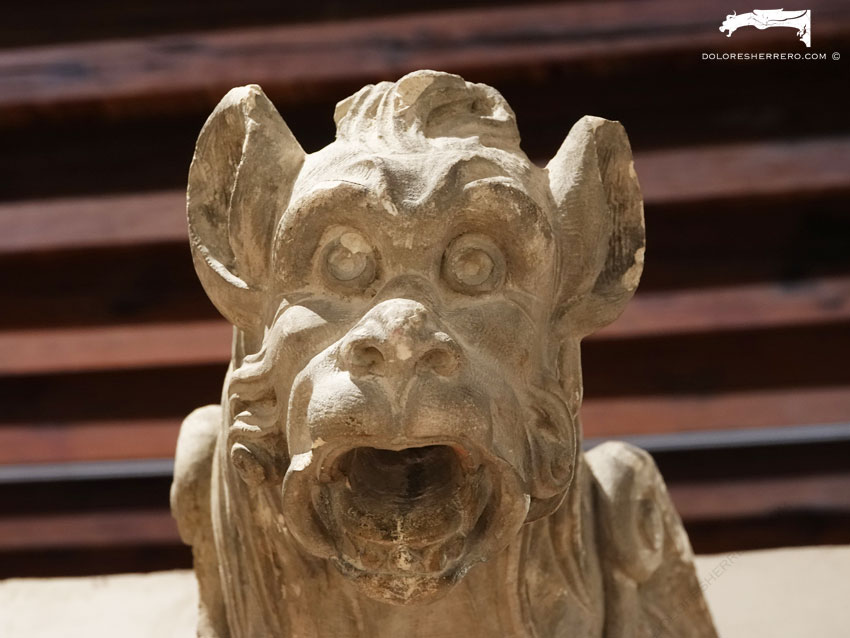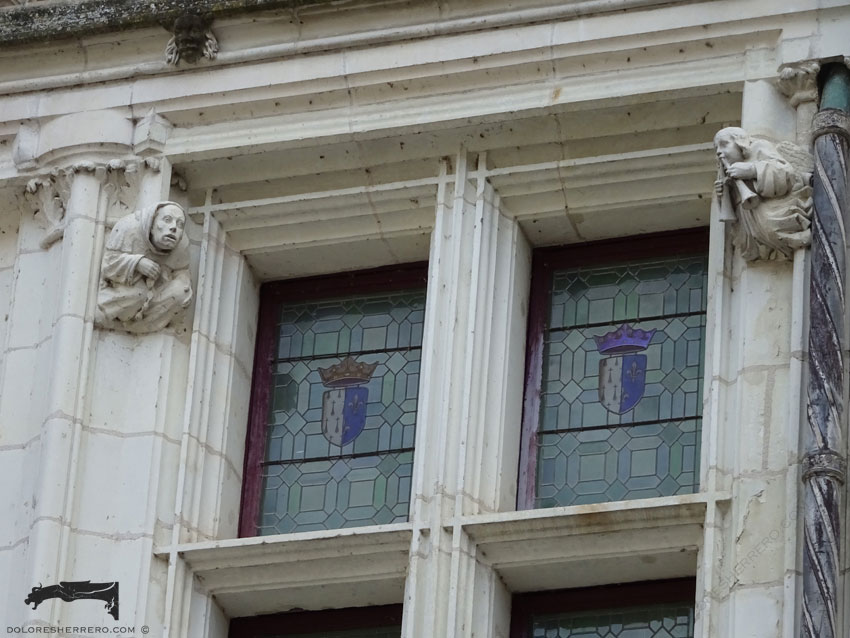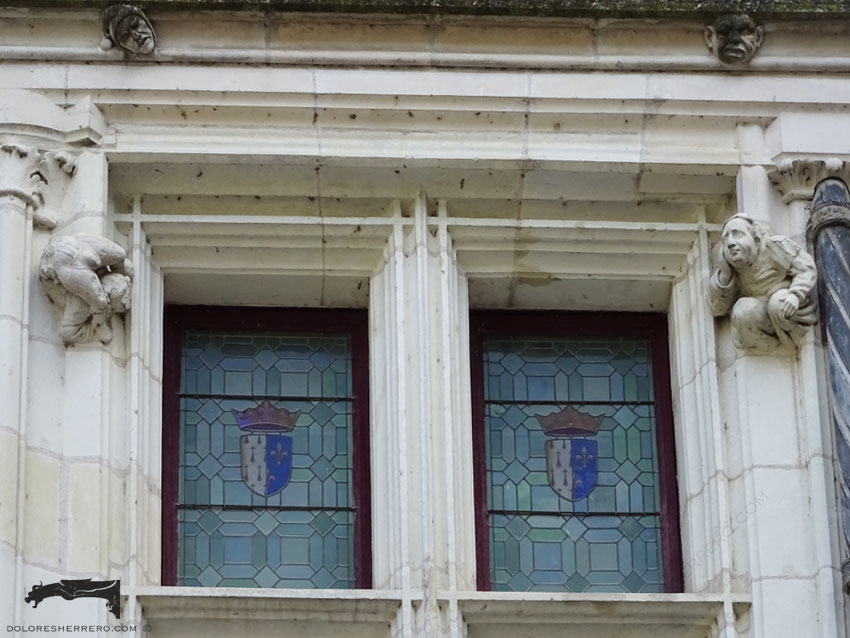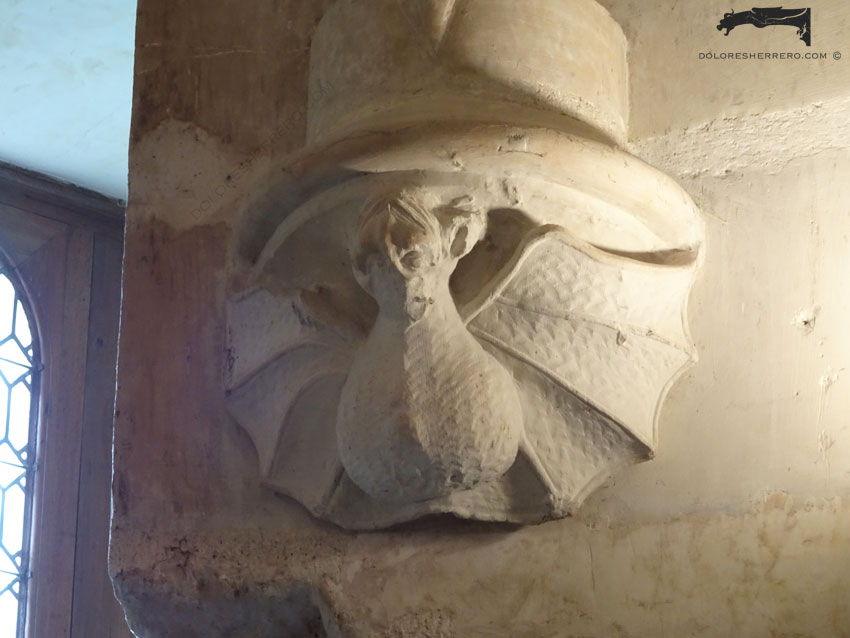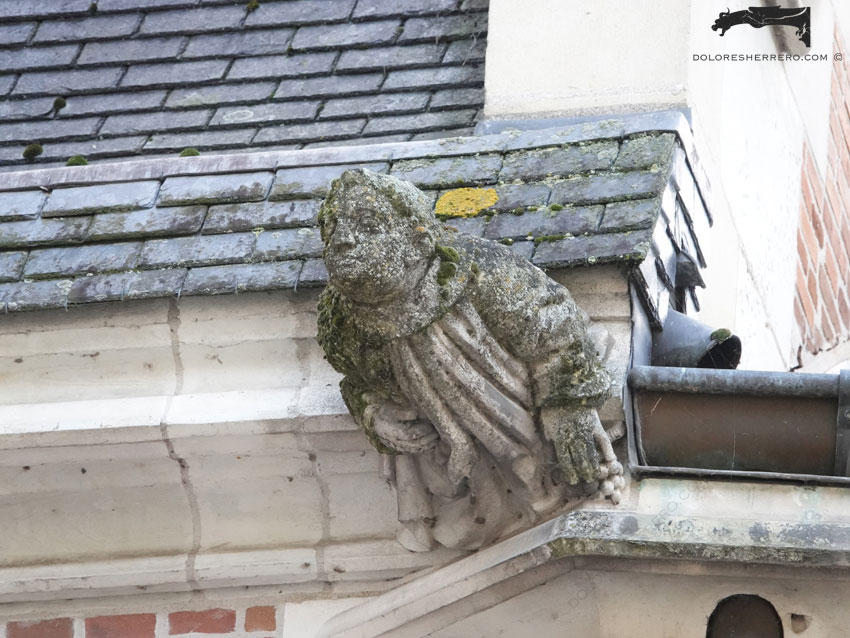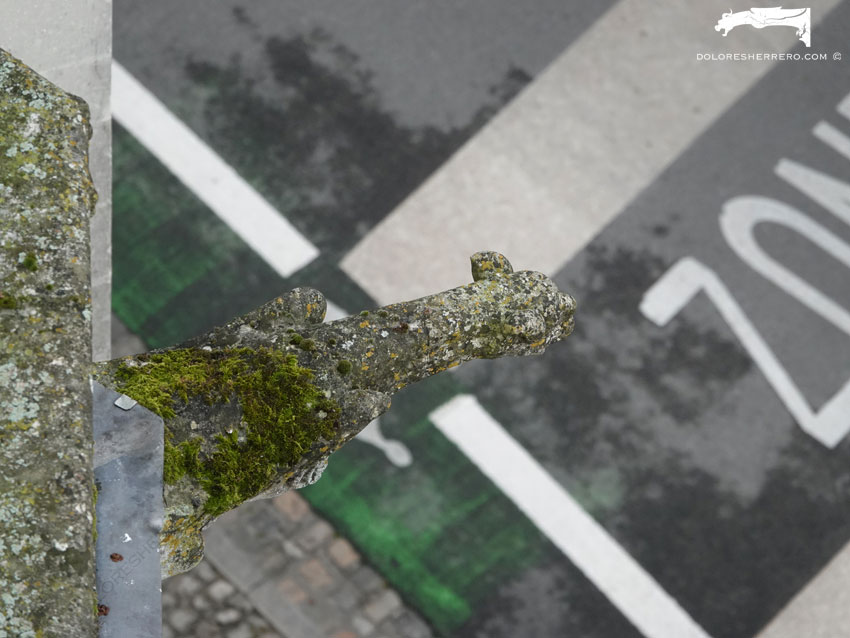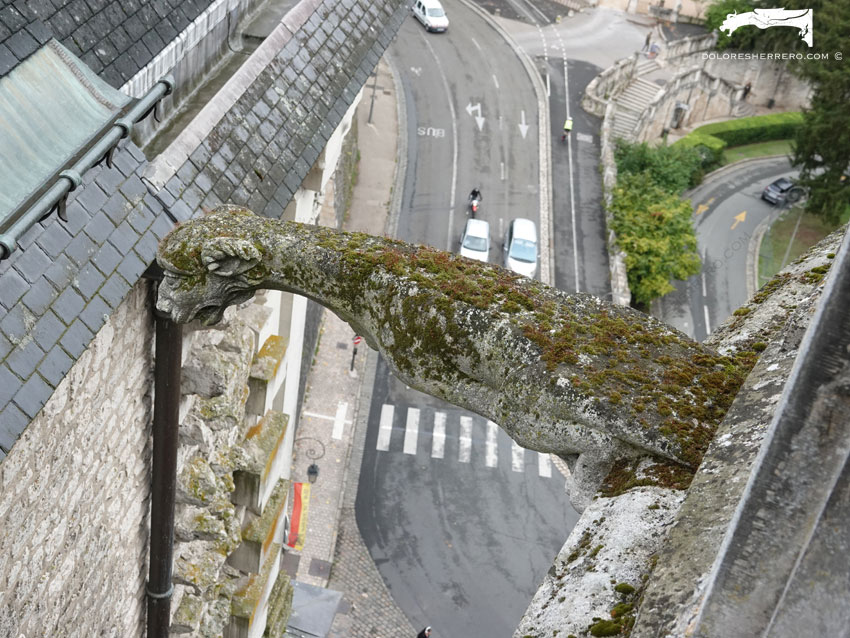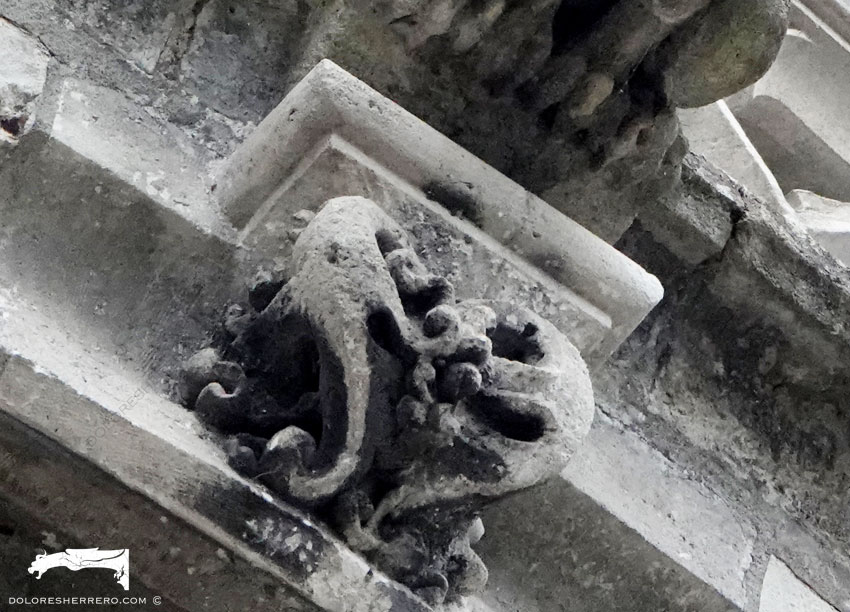In today’s post we travel to one of France´s most impressive and magical places, where we discover one of the most beautiful sets of French gargoyles on a civil building.
We are referring to the Château Royal de Blois, one of the marvellous châteaux of the Loire, a UNESCO World Heritage Site since 2000.
It was built on the site of the medieval castle of the Counts of Blois and was the residence of several French kings. Between 1843 and 1870, the architect Félix Duban conducted major restorations that completed the architectural diversity of this extraordinary building.
We have divided the building into the four gargoyle areas: the courtyard, the north side, the south side and the museum. We will show the gargoyles according to their typology, to make it as complete and easy as possible. As there are damaged gargoyles, we will only show you those that are in a good state of conservation.
So, we hope you enjoy this amazing collection, and we begin with the gargoyles of the courtyard.
The large courtyard of this imposing castle brings together four artistic styles, giving it a great architectural richness: Gothic (the 13th century medieval castle), Flamboyant Gothic (Louis XII wing, 1498-1508), Renaissance (François I wing, 1515-1519), and Classicism (Gaston d’Orléans wing, 1635-1638).
Real animal
The animals, as we usually do, are called real animals to differentiate them from mythological or fantastic ones.
Two animals are represented here: the dog and the ram. We see details such as fur, large eyes, drooping, flat ears, and a peculiarity regarding the posture: the front left leg is placed behind the hind leg, which gives the figure a certain dynamism.
There is also a ram of magnificent size and style, with a protruding and decorated windpipe and spirals on the neck.
- Ram
- Dog
- Ram
- Dog
- Ram
- Dog
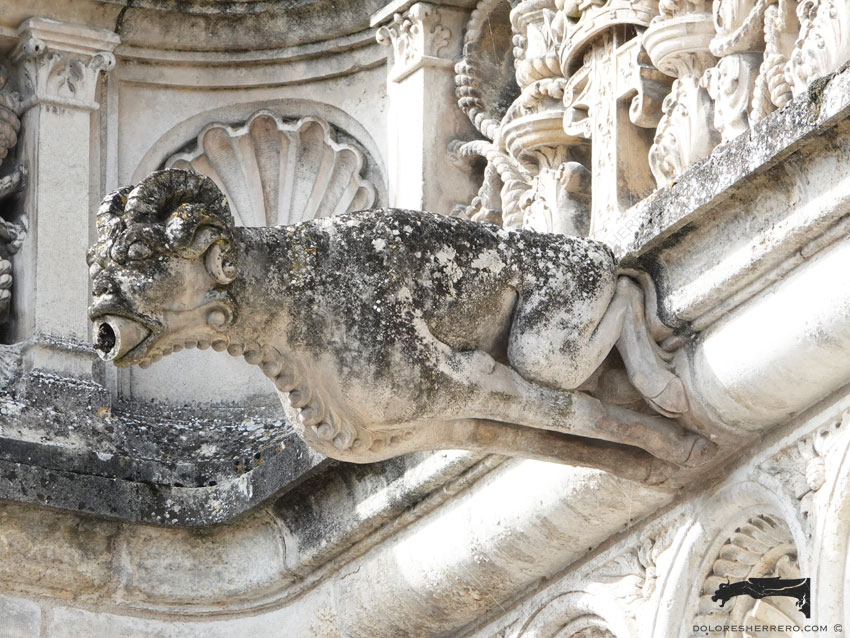
Ram
Fantastic animal
A peculiar dragon made of metallic material with scales, a tongue and a feathered head, placed at the end of the wall pipes used to channel the water. This type of drains with the heads of dragons or fantastic creatures at the ends where the water flows out can be seen in other gargoyles in Spain and Europe.
Animal monster
Many animal monsters, hybrids that arise from the combination of various animals, have demonic touches, so many of them could also be classified as demons. However, we will include in the demonic typology those that have elements of demonic characteristics.
All of them are winged dogs with peculiar characteristics, some of them already seen before and others new: pupils, crossed legs, decorated wings, teeth, stuffed eyes, muscular necks, elongated and sunken snouts, or fur.
It is curious to note that some of them resemble two gargoyles from the Royal Hospital in Santiago de Compostela (Spain).
- Royal Hospital in Santiago de Compostela (Spain)
- Royal Hospital in Santiago de Compostela (Spain)
Demon
As we have explained above, although many gargoyles have a demonic appearance, we will include in the demonic typology those which have characteristic elements of this type, which we will now specify.
Once again, we see winged quadrupeds (dog, ram), with characteristics already seen: pupils, stuffed eyes, fur or crossed legs. And to these we will add others of the demon typology: pointed ears, nasal bridge or marked plume, fierce gestures, double hooves, frontal protuberance or horn, dragon-like neck and ghostly appearance. Finally, a tremendous gargoyle with an elongated snout and lion-like mane, with a terrifying appearance.
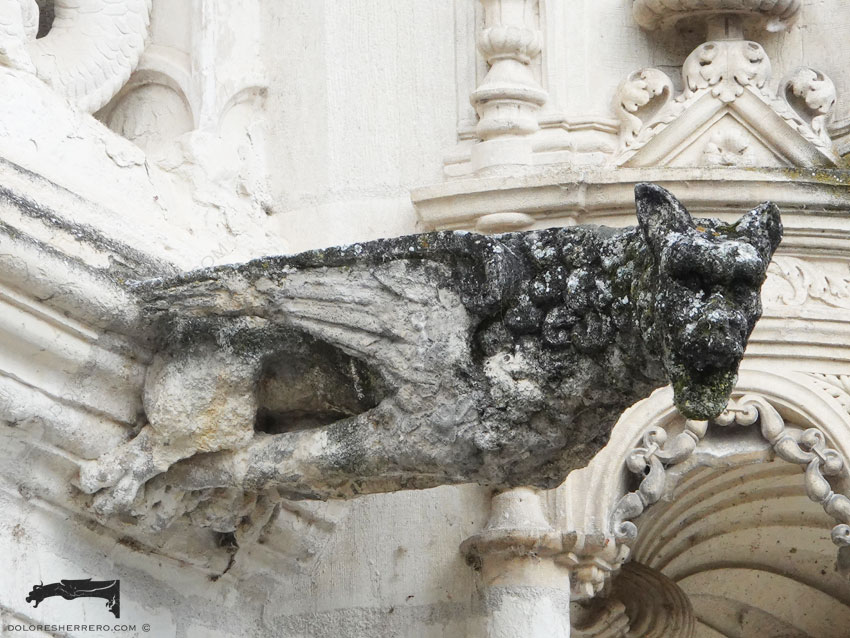
Human
The human gargoyles are sensational. There are two really beautiful ones in this area.
The first is a man in a man’s garment with large folds down to his feet, a belt or cincture (he could be a monk) and a skullcap on his head. He has his left knee on the ground, his right hand on his right knee, and his left hand on his head. It is very expressive, with an apparent gesture of shouting, lamentation or pain.

The second is a monk also dressed in a garment with large folds down to his feet, with a belt or cincture and tonsure on his head. He places his right knee on the ground, his right hand on his left knee, and his left hand on his chest. It is also very expressive, with a devout gesture.
Geometric design
There is also a geometric gargoyle, consisting of a semi-cylindrical block, at ground level.
We move on to the north side, to the Loggias Façade.
Real animal
In this area we again see figures of dogs with many of the characteristics seen previously, plus some new features: coats (curly, straight or mane-like), pupils, fangs, ears (long and drooping, protruding, backwards), protruding tongue, teeth, crossed paws, collar, wrinkles in the mouth showing fierceness and stuffed eyes.
There is also a pair of apes: one with a hand on its neck, fur and head cocked to one side; and one with pupils and fur on its body that, due to the type of head, could also belong to another typology (anthropomorphic, demon).
The last one is a wild boar, although no tusks are visible, with fur on its neck.
- Dog
- Dog
- Dog
- Dog
- Dog
- Dog
- Dog
- Dog
- Ape
- Ape
- Ape
- Wild boar
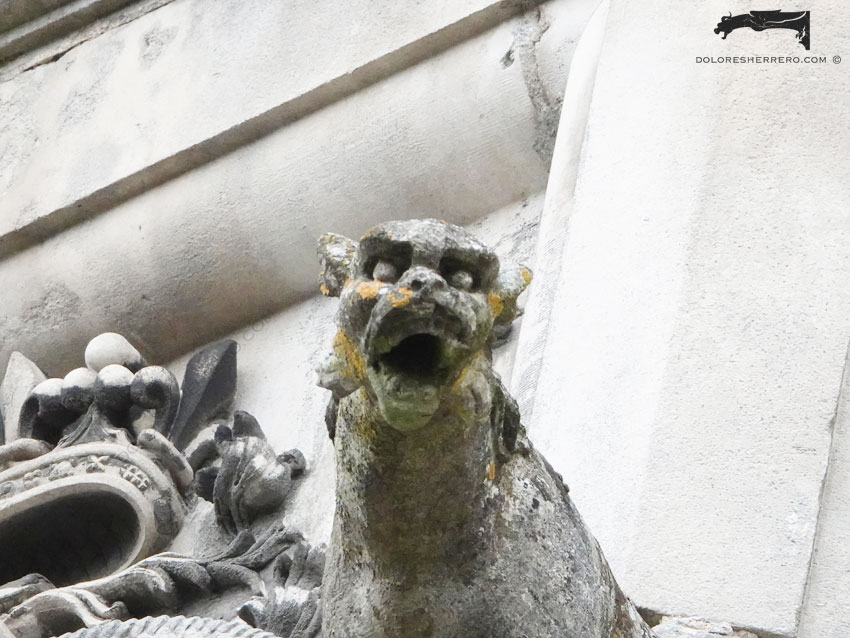
Dog
Fantastic animal
Among the fantastic or mythological animals are some fascinating and noteworthy figures.
There are several griffins with fur, plumes and plumes. There is also an impressive satyr, with his right hand on his neck and his left hand on his left leg, horns and fur on his body. And a wonderful sphinx.
- Griffin
- Griffin
- Griffin
- Satyr

Sphinx
Animal monster
We continue to see winged dogs and rams with features already seen and some other singular ones: coats (straight, curly), teeth, protruding tongue, stuffed eyes, pupils, crossed paws, leonine mane, flat and drooping ears, leaf-like wings, marked trachea, double hooves (a more demonic feature), wings decorated with large feathers that look like leaves, and oval and profiled eyes.
There is also a magnificent, winged lion, and another lion with ram’s horns and a simian snout.
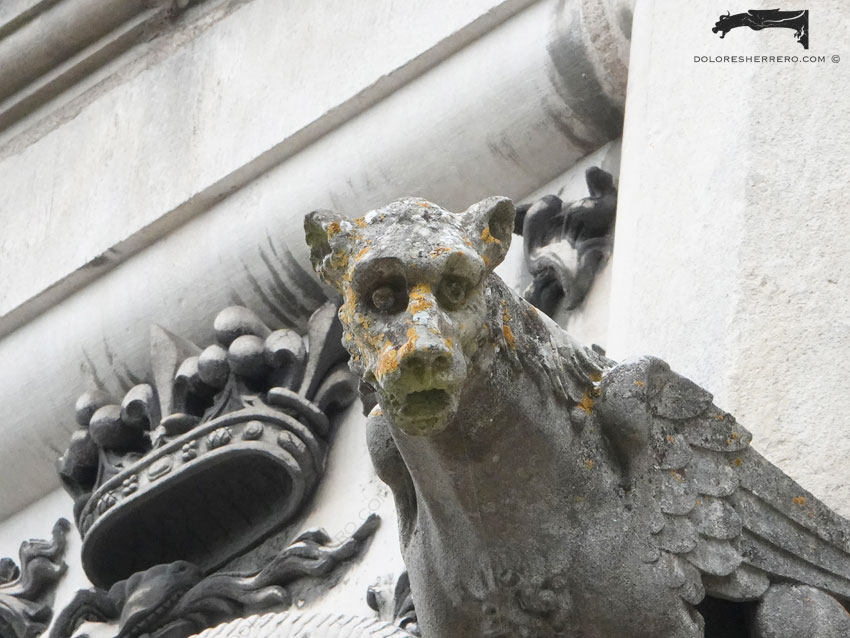
Demon
Five winged quadrupeds have been included in this section with features more typical of the demon typology: membranous wings, double hooves, horns, a fierce gesture, pointed ears and a dragon-like windpipe.
In addition, we see other characteristics such as crossed legs, a tilted head, fur, stuffed eyes, pupils, pronounced eyebrows, pronounced trachea, cheeks and an elongated snout.
Geometric design
There are two types of geometric gargoyles on this side. The first is polygonal in shape with a ‘u’ shape and is placed on a bracket. The second is rectangular with an indentation underneath that extends, giving the impression of a head and body, a figure reminiscent of the gargoyles in the cloister of Avila Cathedral (Spain).
- Ávila Cathedral (Spain)
We move on to see the gargoyles on the south side. We are in the Louis XII wing, where we can see an impressive façade with a magnificent equestrian statue of Louis XII above the door.
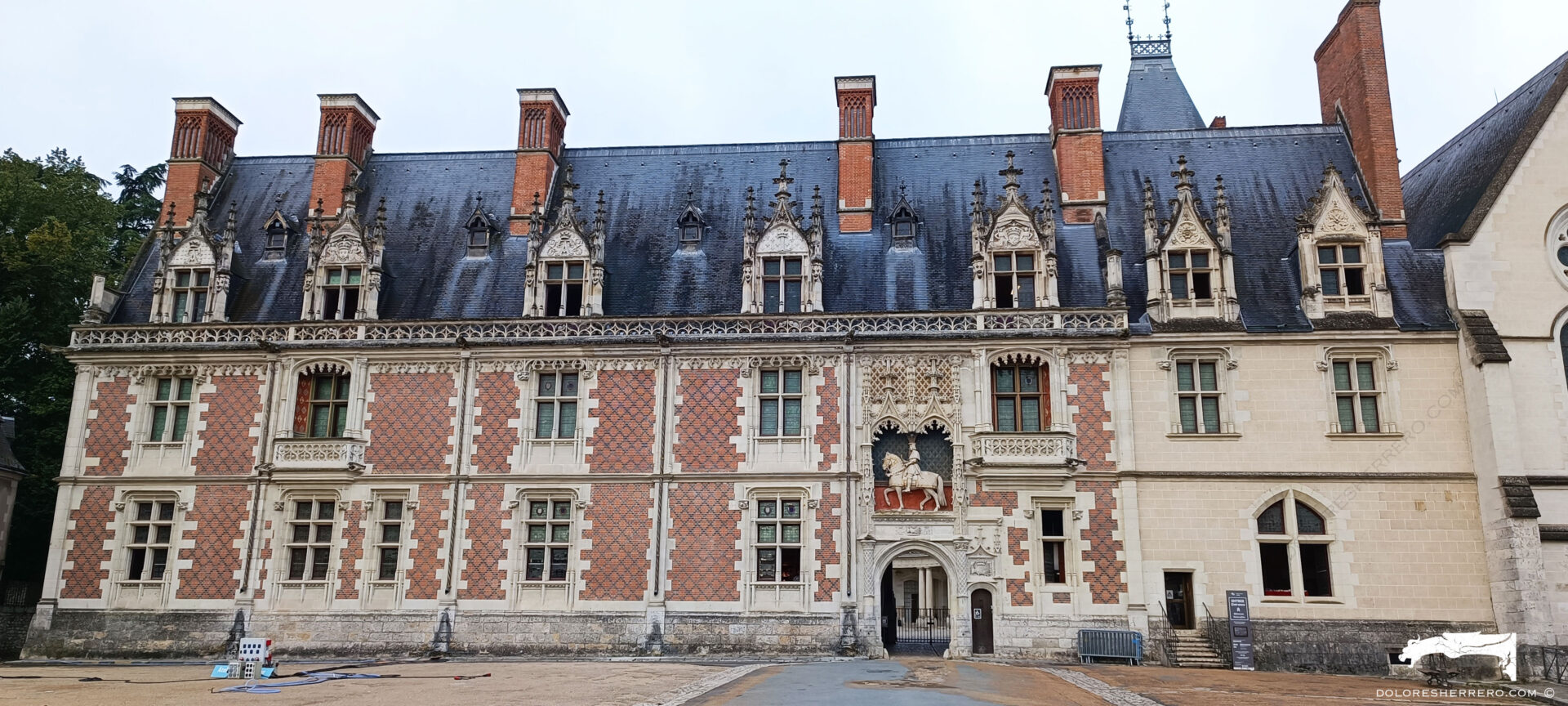
Real animal
In this area there are three figures of dogs and an ape. The first dog is a breeding dog, a theme often seen in gargoyles. The next two are quite similar, with a fierce gesture (showing fangs), oval and profiled eyes, genitals, one of them with fur, and both with a somewhat deformed body, probably to adapt the figures to the space; they are two gargoyles with a grotesque touch, they seem to be smiling.
The ape is like the two previous ones in terms of sculptural style. It also shows its genitals and has something inside its mouth that could be food.
- Dog with puppy
- Puppy (detail)
- Dog
- Dog

Ape
Fantastic animal
As in the courtyard, there is a dragon or fantastic animal made of metallic material with scales, a tongue and a feathered head. It is placed at the ends of the pipes in the wall used to channel water.
Animal monster
Of this typology we see a hybrid, a winged dog, with a fierce gesture (showing its fangs and tongue) and with genitals.

Demon
This is an impressive gargoyle of great sculptural beauty. It is a winged demon with a pronounced windpipe and dragon-like body. It has membranous wings, eyes with pupils, fangs and a fierce gesture.
Human
Four figures make up this typology. They are astonishing and extraordinary gargoyles that are worth seeing in detail for their artistic beauty and their formal and thematic interest.
We begin with the figure of a man with a sack in his right hand and his left hand resting on his left leg. At first glance, the sack looks like a bundle; however, it could also be a miser’s sack. He is wearing medieval clothing and has a very expressive gesture: he is shouting.
The next is a woman with a basket of eggs or fruit in her left hand. This is a street vendor in medieval clothing, with her right hand over her mouth, shouting to sell her wares; another very expressive gargoyle.
The third is a man with a cane between his legs, who could be a cripple. He wears medieval clothing, a belt, and has an expressive gesture.
Finally, we see a man holding a blunderbuss with both hands and dressed like a soldier.
Finally, we are going to see the gargoyles in the castle museum.
This museum houses some of the human gargoyles we have already seen, and other new ones that we will see below, which depict a dog and two animal monsters (winged dogs).
- Dog
- Dog
- Dog
- Animal monster
- Animal monster
- Animal monster
- Animal monster
- Animal monster
Grotesques or chimeras
Apart from the gargoyles, there is a wide variety of chimeras or grotesques in the castle. Here are some of them, with a variety of themes: an angel with a musical instrument (aulos), a monk, a contortionist, a man with his hand on his face, Hercules’ fight with the Hydra of Lerna, a bat, a boy with a tilted hat, and another monk.
There are also some chimeras with the appearance of gargoyles, but without a gutter; one of them represents a dog with a windpipe, oval and slightly protruding eyes, teeth and decorated ears.
Finally, there is a corbel with vegetal decoration.
- Corbel
In conclusion, we would highlight above all the sculptural beauty and the thematic richness of the castle’s gargoyles.
In general, the gargoyles of animals and monsters are rounded, superb figures, with detailed carving that we have been able to appreciate in decorative elements such as spirals and in features such as tracheas, fur, etc. We have also seen dynamism in the postures, with tilted heads and that original placement of the legs.
The demons are robust and impressive. We highlight their expressiveness, with the fierce gestures and the terrifying and ghostly appearance, accentuated by the stuffed eyes with pupils.
But it is undoubtedly the human gargoyles that really catch the eye. They are all admirable. The carving is exceptional, with meticulous detail in the heads and bodies, with magnificently pleated garments. They are dynamic, expressive figures, with great plasticity. And the subject matter is highly original, showing unusual professions and characters.
A unique and fascinating set of gargoyles, a collection worthy of contemplation. And not just the gargoyles, but the castle and its outbuildings. All this in an atmosphere full of magic and charm, the city of Blois, a beautiful place worth visiting, where you can stop to admire not only the Château Royal, the cathedral and other places, but also go beyond the cornices to contemplate these fantastic stone beings, the gargoyles.
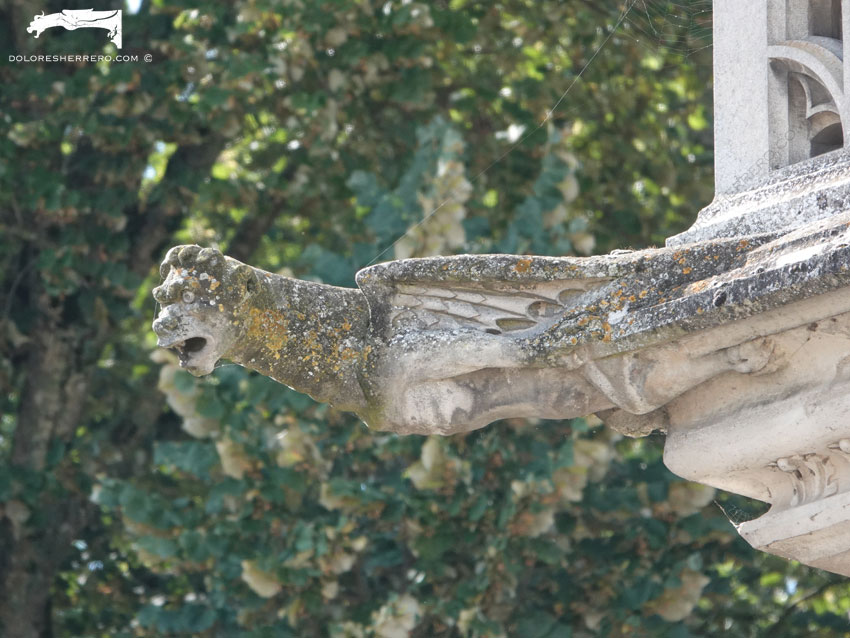

Doctor of Art History and researcher specializing in the study of gargoyles.
I am Dolores Herrero Ferrio, and my thesis, “An Approach to the Study of Gargoyles of Gothic Cathedrals in Castilla and León”, is dedicated to the study of these fascinating figures.
If you like gargoyles and art history, you will also enjoy my book, “The Gargoyle and Its Iconography,” a book I have written with great care for those interested in the world of gargoyles.
I have created my own Encyclopedia of Gargoyles, a Gargopedia to share with you, where you will discover all the secrets and wonders of these enigmatic sculptures.
I hope you enjoy this Gargopedia as much as I have enjoyed creating it, and remember that each gargoyle has a story to tell, and here you will discover them all.
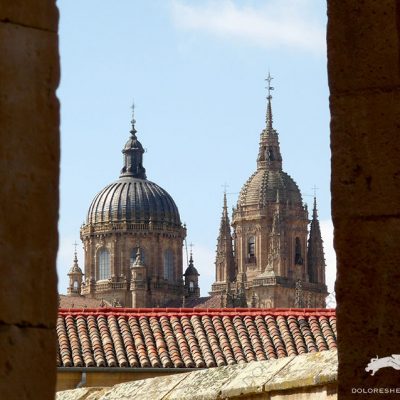 The Exceptional Gargoyles of the West Facade of Salamanca Cathedral
The Exceptional Gargoyles of the West Facade of Salamanca Cathedral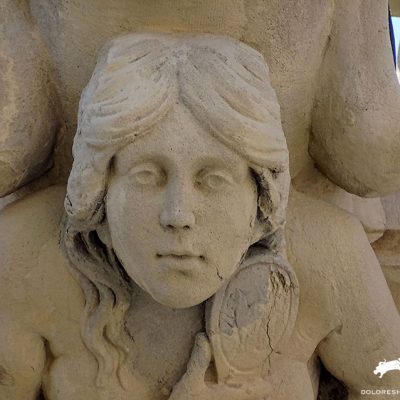 The Gargoyles of the University of Alcalá de Henares: A Sculptural Legacy of Madrid, Spain’s Heritage
The Gargoyles of the University of Alcalá de Henares: A Sculptural Legacy of Madrid, Spain’s Heritage The Elusive Gargoyles of the Meirás Towers in A Coruña, Spain
The Elusive Gargoyles of the Meirás Towers in A Coruña, Spain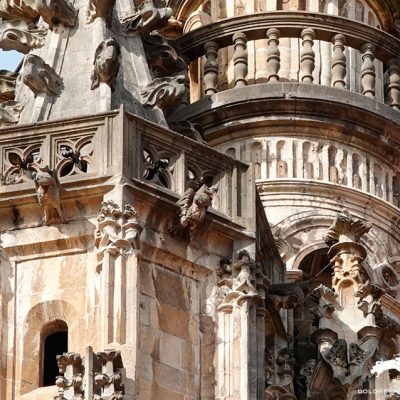 The Gargoyles of Oviedo Cathedral in Spain: Guardians of an Asturian Treasure
The Gargoyles of Oviedo Cathedral in Spain: Guardians of an Asturian Treasure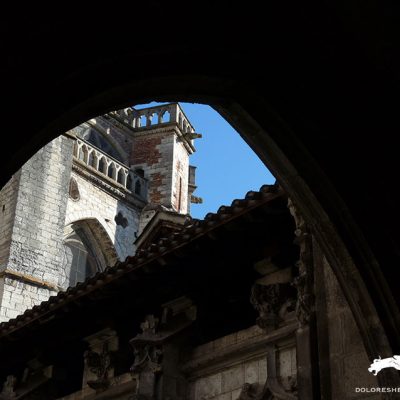 Gargoyles of Cahors Cathedral, France: Moss-Covered and Evocative
Gargoyles of Cahors Cathedral, France: Moss-Covered and Evocative